Shipley is an old club, founded in 1896. It moved to its present site in 1919, engaging Dr MacKenzie to lay out the course, which was opened in June 1921. At 6220 yards, with a par of 71 and standard scratch score of 70, it is quite short by today’s standards. Unusually it has six par 3s and five par 5s. Indeed, the front nine is particularly remarkable in having only two par 4s as against three par 3s (two of which are consecutive) and no fewer than four par 5s.
The site they chose for the golf course is delightful, and to this day you see only a handful of houses from the course and you are blissfully free of traffic noise. It is a compact course, involving some crossing of holes and there are plentiful chances of hitting other golfers should you stray off line. Presumably in response to the latter a programme of tree planting has been undertaken which occasionally spoils the fun.
This is not a particularly hilly course by West Yorkshire standards but there is sufficient undulation to provide considerable added interest and MacKenzie was a master at using the topography to maximum effect. One of MacKenzie’s thirteen principles of golf course design was that there should be a minimum of lost balls. The three of us played the round in exactly three hours and none of us lost a ball.
I joined two GCA regulars there, Andrew Mitchell and Andy Levett, and we had a lot of fun. The condition of the course was exemplary and as we got away just in front of a large group of seniors playing fourballs we had a marvellous cushion behind and effectively had the place to ourselves. What was really remarkable was the green fee – a mere £25 each on Mondays!
Part way round the question entered my head, ‘Would I recognise this as a MacKenzie course if I hadn’t already known that it is?’ I am not sure we ever came to a conclusion.
1. 482 yards par 5
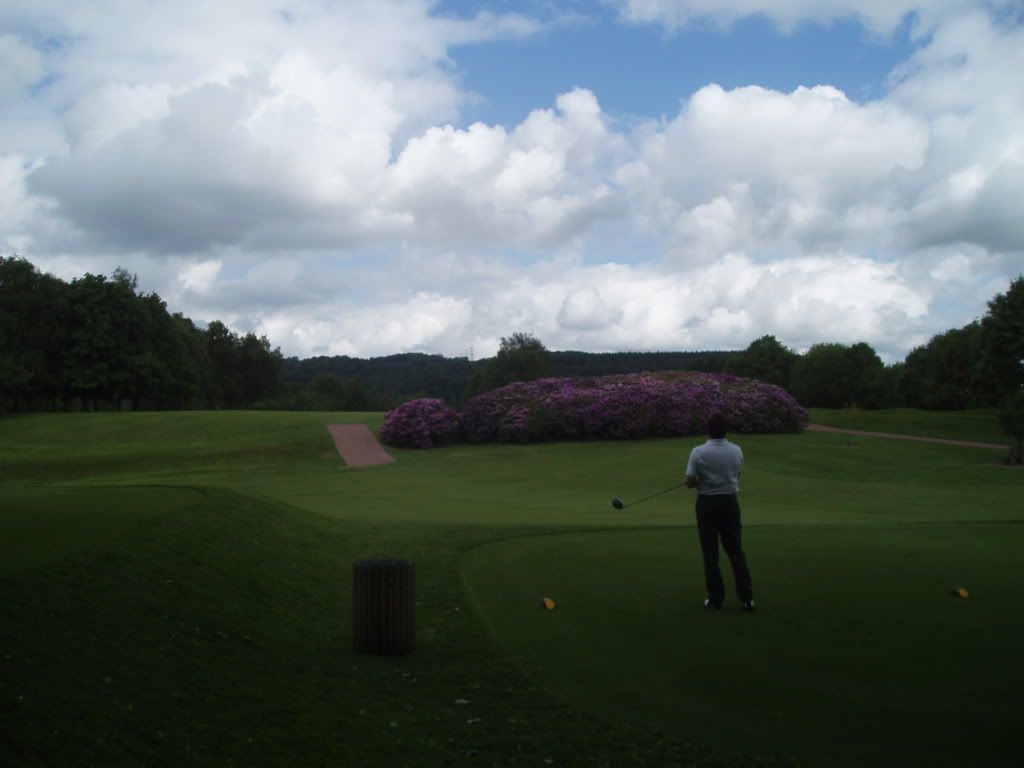
You start with an incongruous drive, blind over a great bank of rhododendrons, but it is perfectly obvious from the converging lines of trees where you should aim. It is not a difficult carry. Whether this is an original feature or not I cannot say, but there would be uproar if anyone were to suggest removing it now.
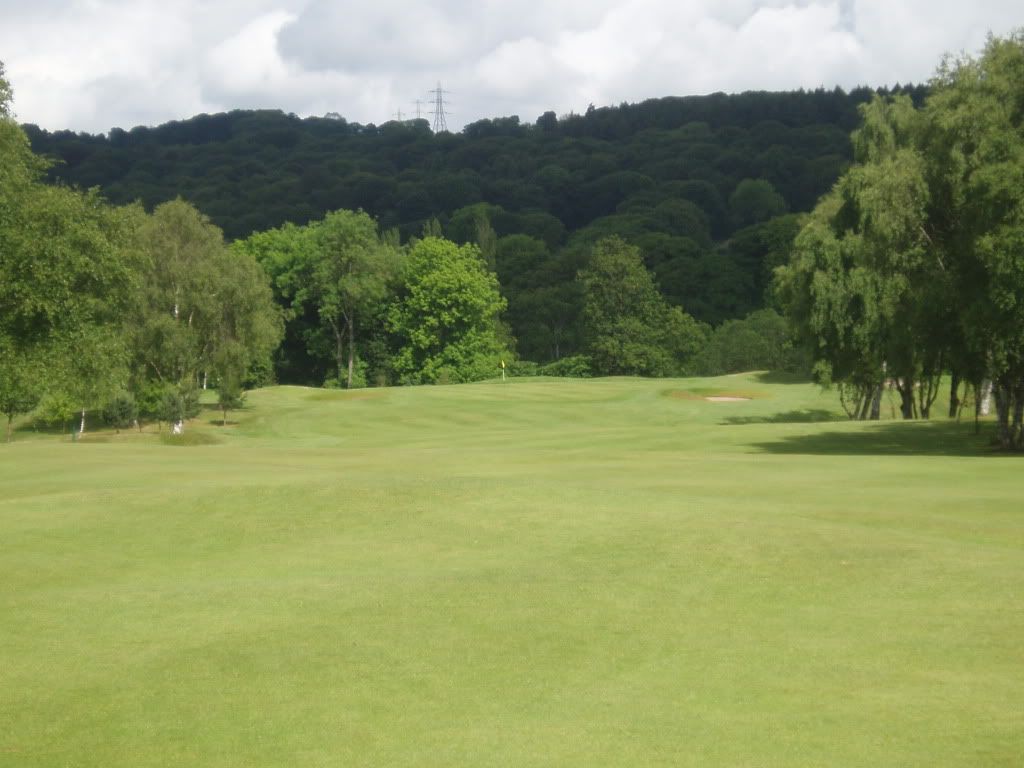
The fairway gradually falls towards the green, which presents a good target and a potential eagle or birdie for the longer hitter, but over the last hundred yards or so the fairway undulates considerably and there is a dip short of the green which easily deceives those of us who still estimate distances by eyesight.
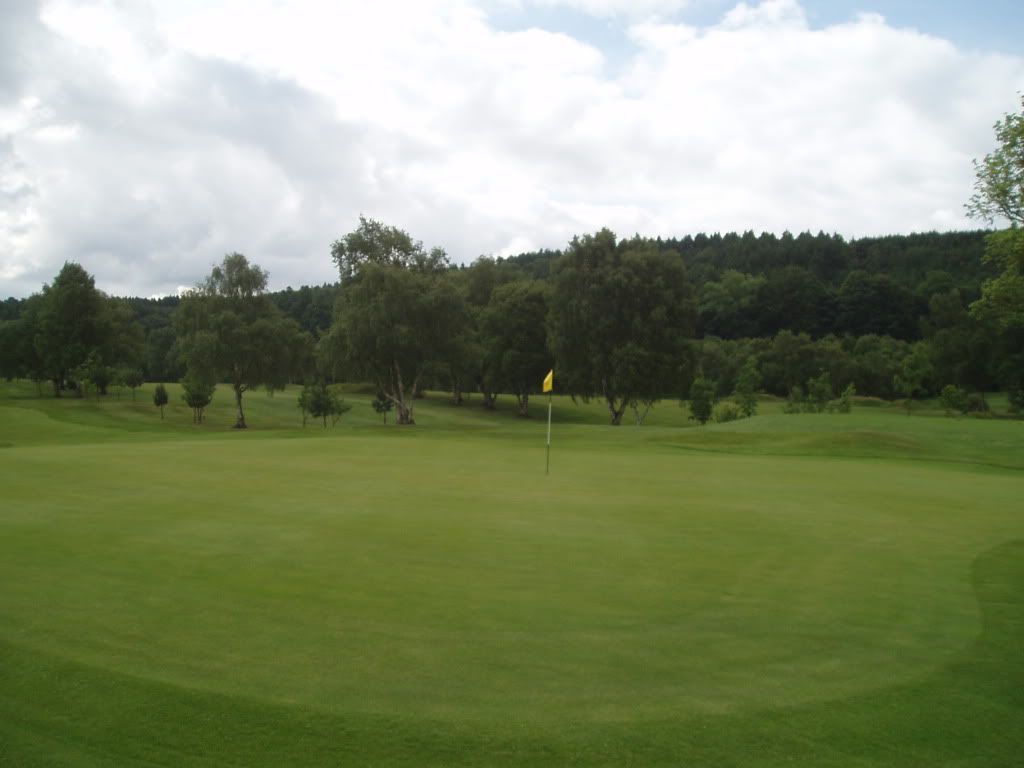
This is quite a deep green for a relatively short par 5, and it is not outrageously contoured. Later in the round there are moments when the surrounding hills make it difficult to judge exactly which way a green slopes.
2. 396 yards par 4
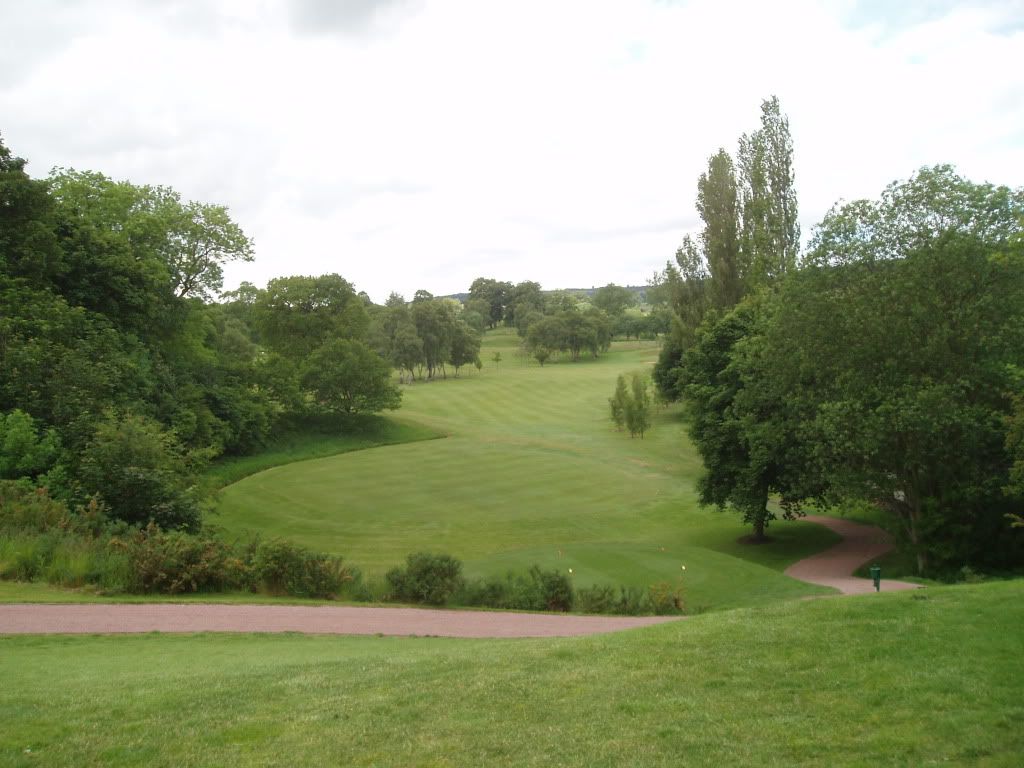
You have to cross the 17th hole to find the 2nd tee, but it is well worth the risk, for the view is uplifting. You can see some of the saplings planted on the right to try to deter us from using that route (which gives the better line to the green) as those who overcook it go out of bounds into someone else’s property and it seems that they do not like it!

Andrew Mitchell has found the perfect spot from which to make his approach. Too far right and it is uphill to the green, possibly from boggy ground. Too far left, as I was, and you cannot avoid the bunkers.

It really is a very good hole.
3. 194 yards par 3
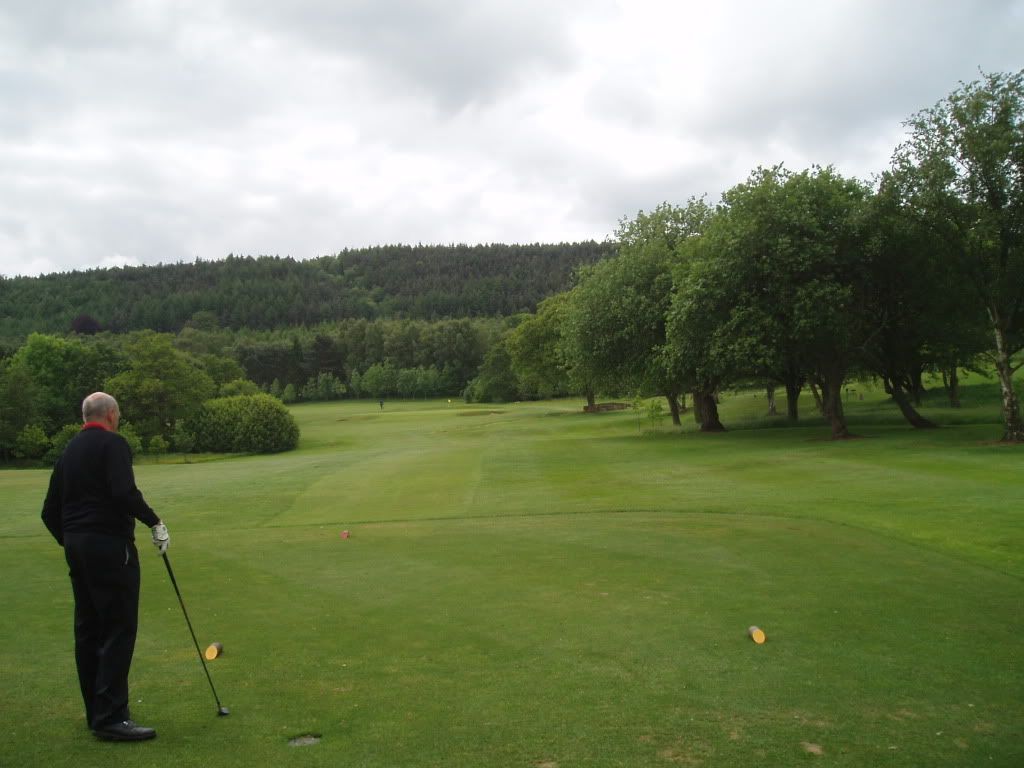
It does not look particularly distinctive or difficult from the tee, but there is just sufficient elevation to add a club or two’s length and the putting surface is only 18 yards deep.
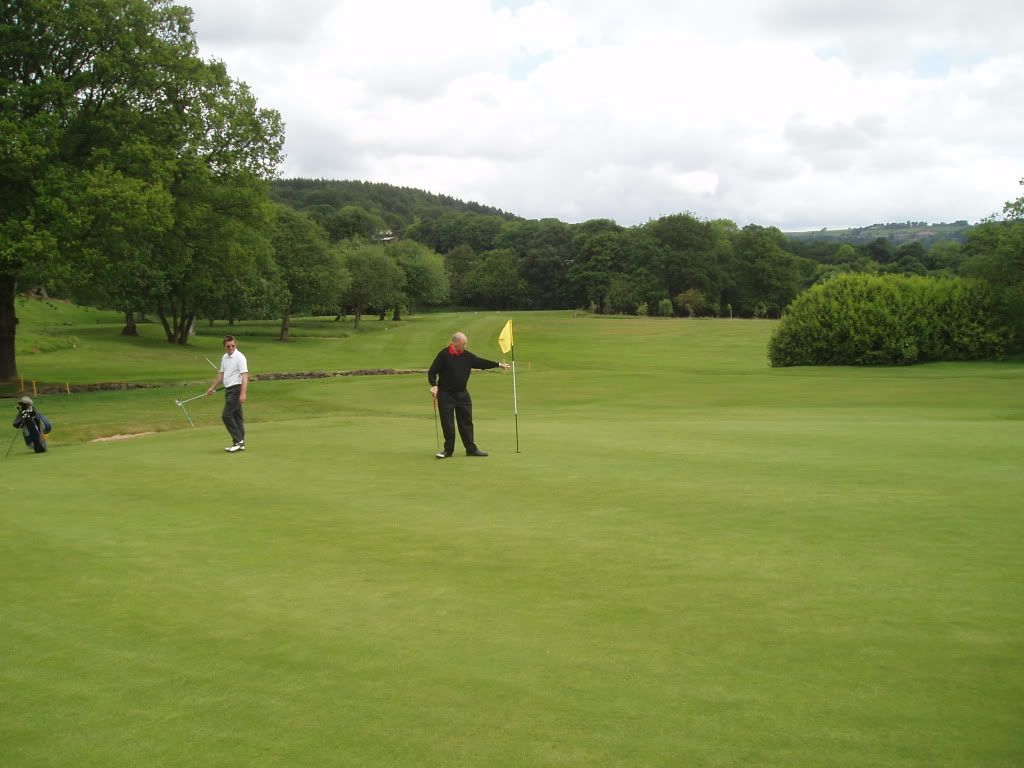
Even looking back from green to tee it looks a doddle. It stood up adequately to our attempts to tame it.
4. 513 yards par 5
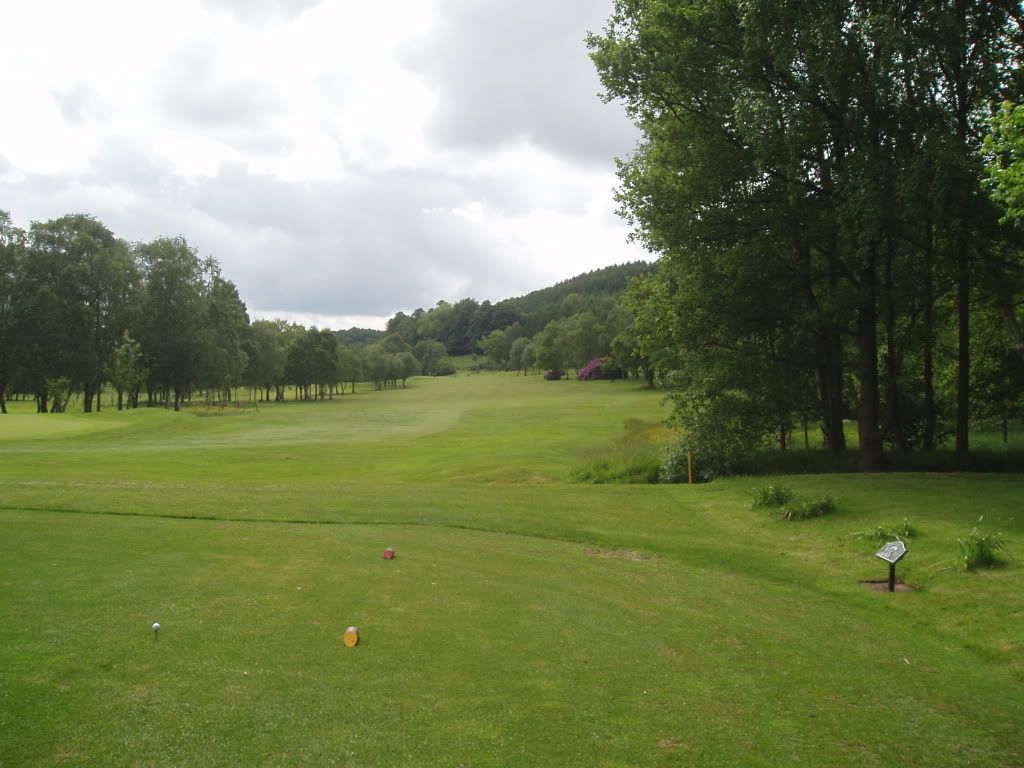
Absolutely straight and with plenty of width, this is a hole on which to open the shoulders. Ditches come into play on either side of the fairway at 233 yards from the back tee, but they should be of no account to the good player.

Less obvious from the tee is how much the fairway slopes to the left. The longer the approach to the green the more the ball will fall from right to left. A running approach might well be aimed on the next tee.
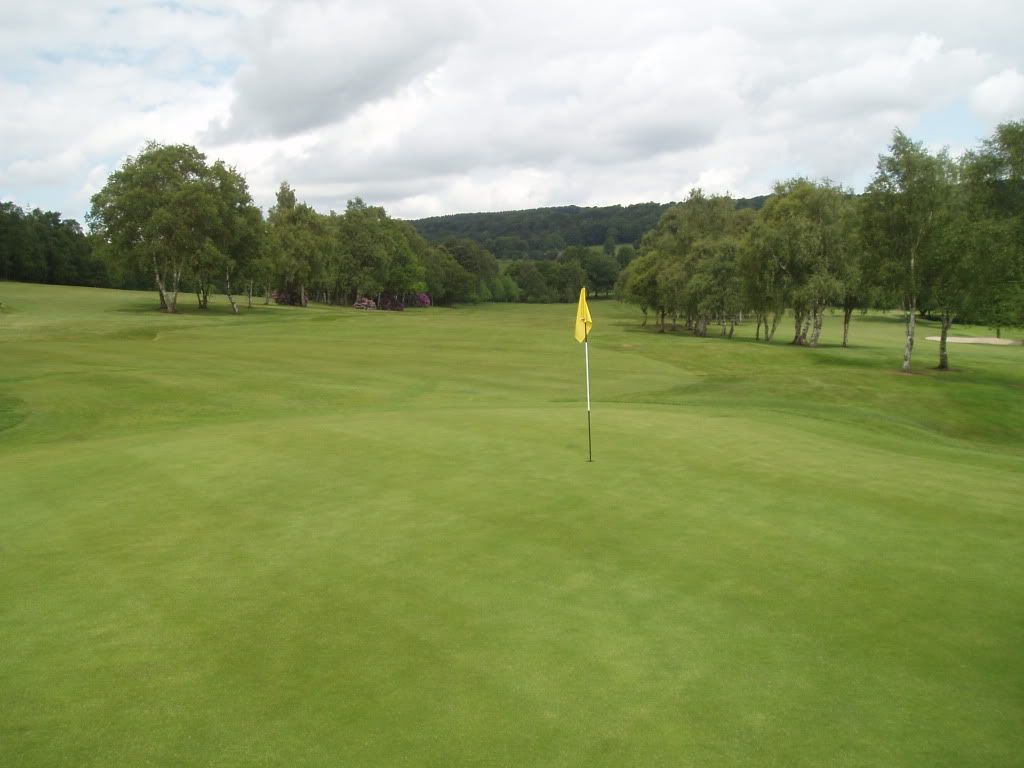
It is also not really apparent as you play the hole that the fairway climbs gently calling for longer shots than the yardage might indicate.
5. 493 yards par 5

From this tee the considerable left to right slope on the fairway is abundantly clear. None of us threatened to drive into the ditch which crosses the fairway at 334 yards from the back tee, but with the downhill run on the fairway it must nowadays be a factor for some. I like to think that Dr MacKenzie was thinking of my second shot when he left the ditch exposed.
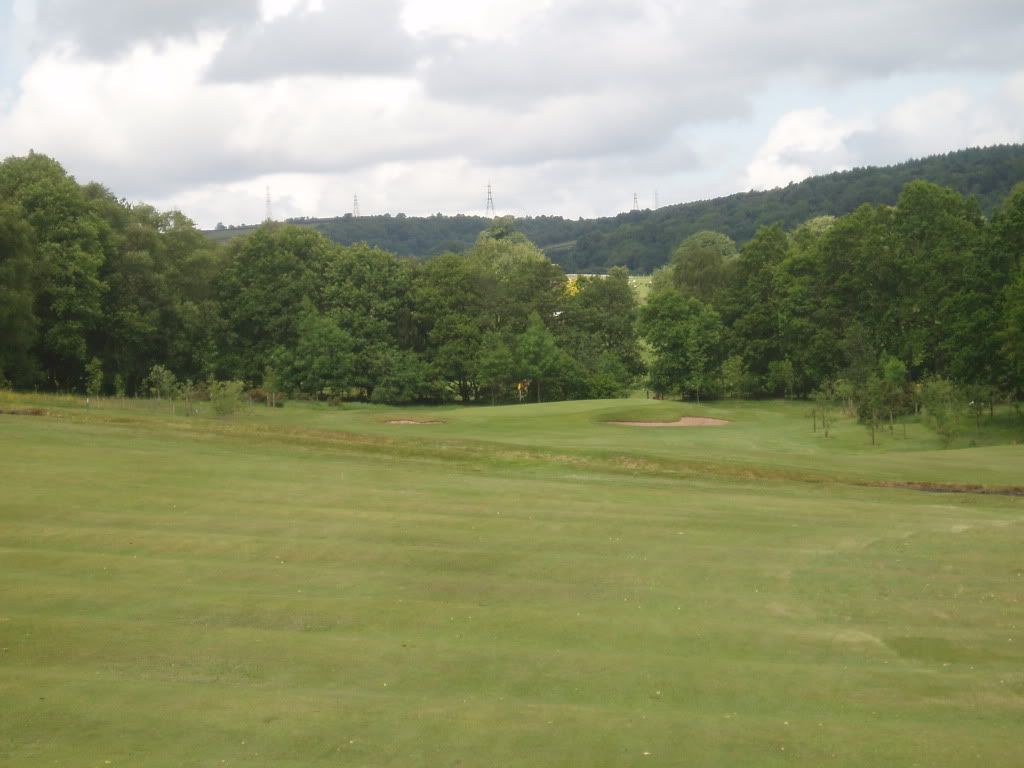
The said ditch.
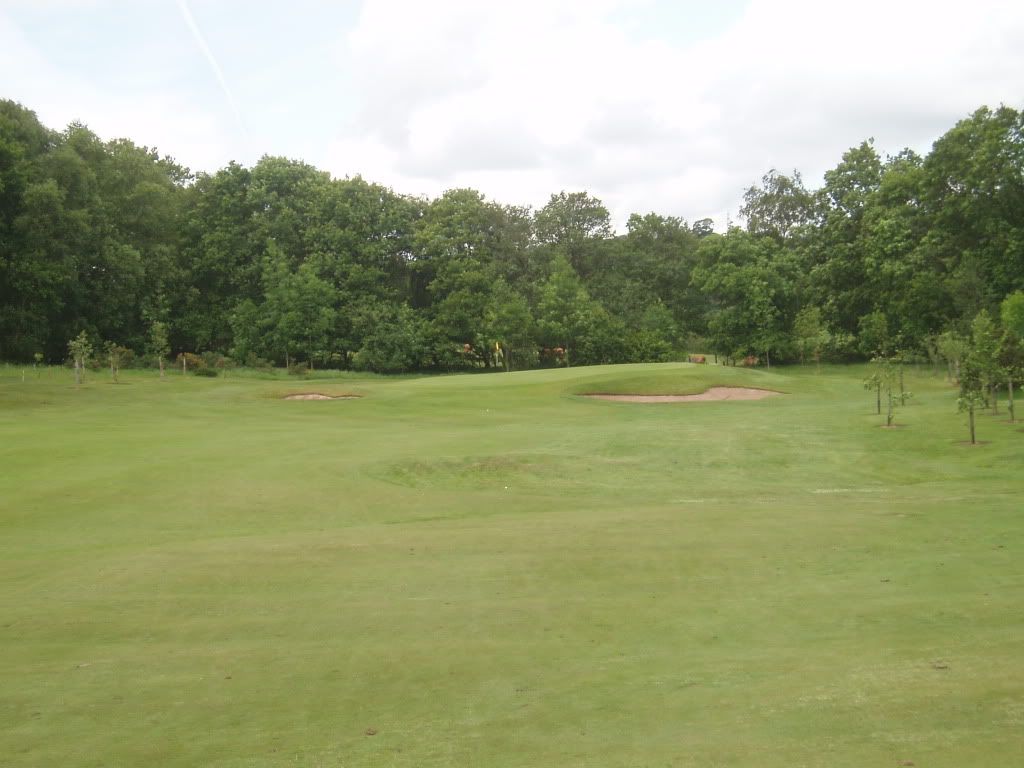
The plateau green is raised just sufficiently to repel all but the most accurate of approaches.

The view back also reveals the degree of slope on the fairway and the elevation of the green.
6. 403 yards par 4
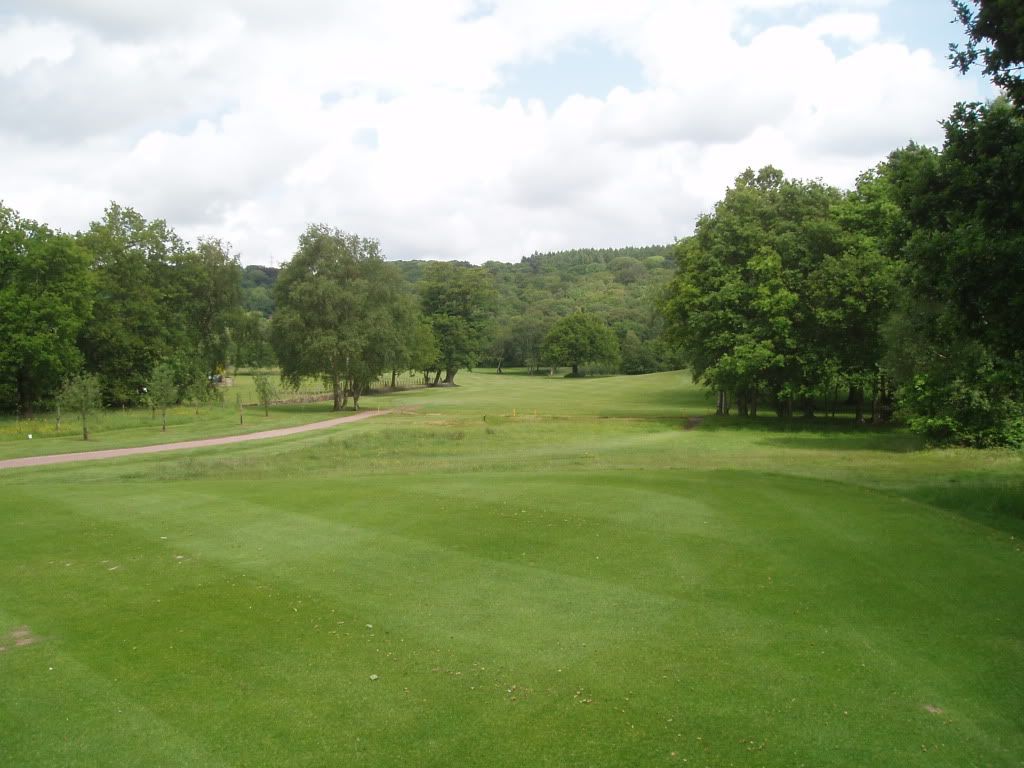
Not all of these trees were in play in MacKenzie’s day, but they are easily out-driven and the hole is not in any way unfair.

From this tree it is 179 yards to the middle of the green, but you get too close to the tree at your peril, and from the right of the fairway (or beyond) the approach is much harder.
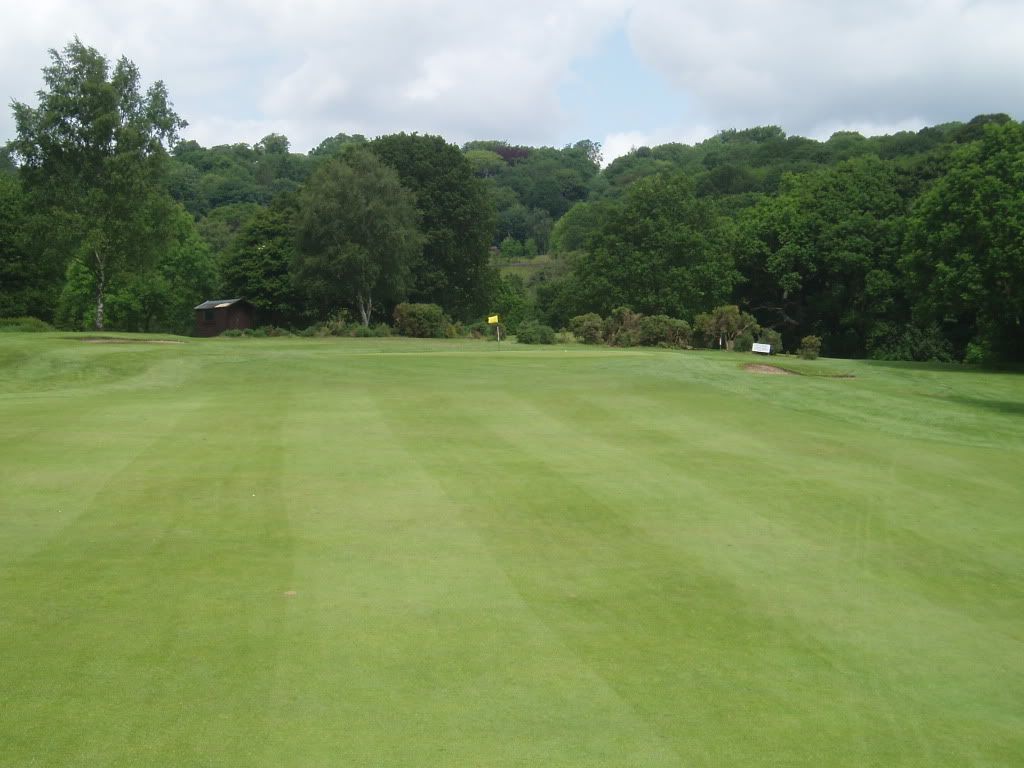
Like so many holes here, it looks simple enough to get on in two (as one of the Andrews did here) but the subtle slopes on the approach are sufficient to make this the first stroke hole.
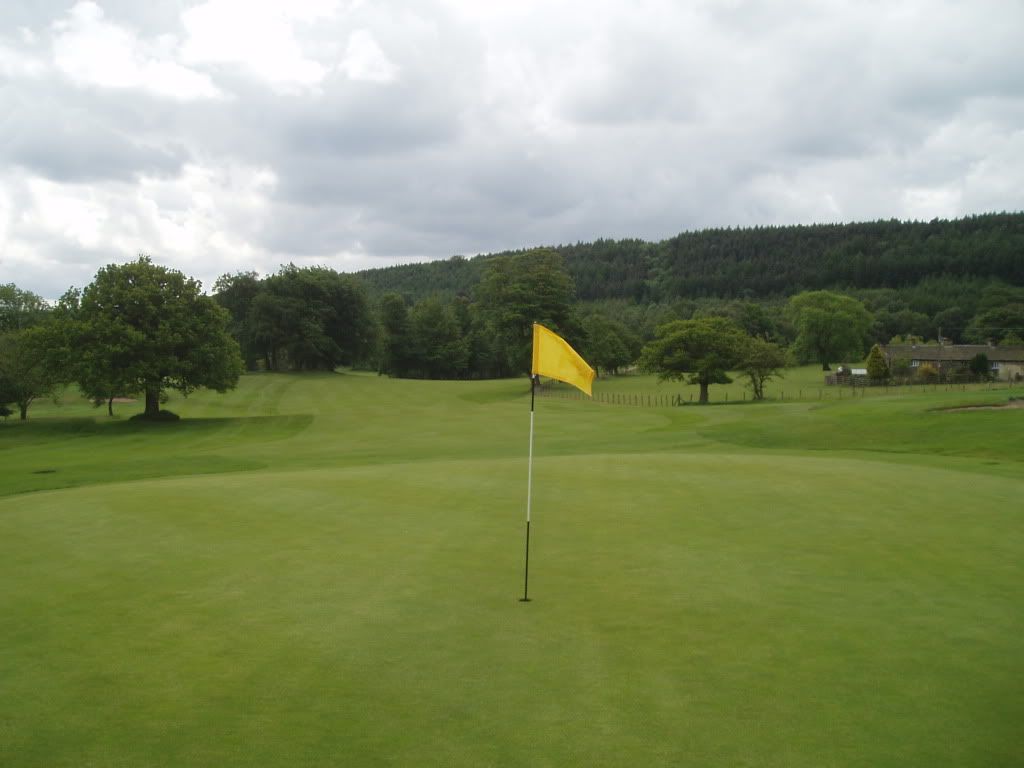
A charming hole, but one which calls for precision even at little over 400 yards.
7. 188 yards par 3
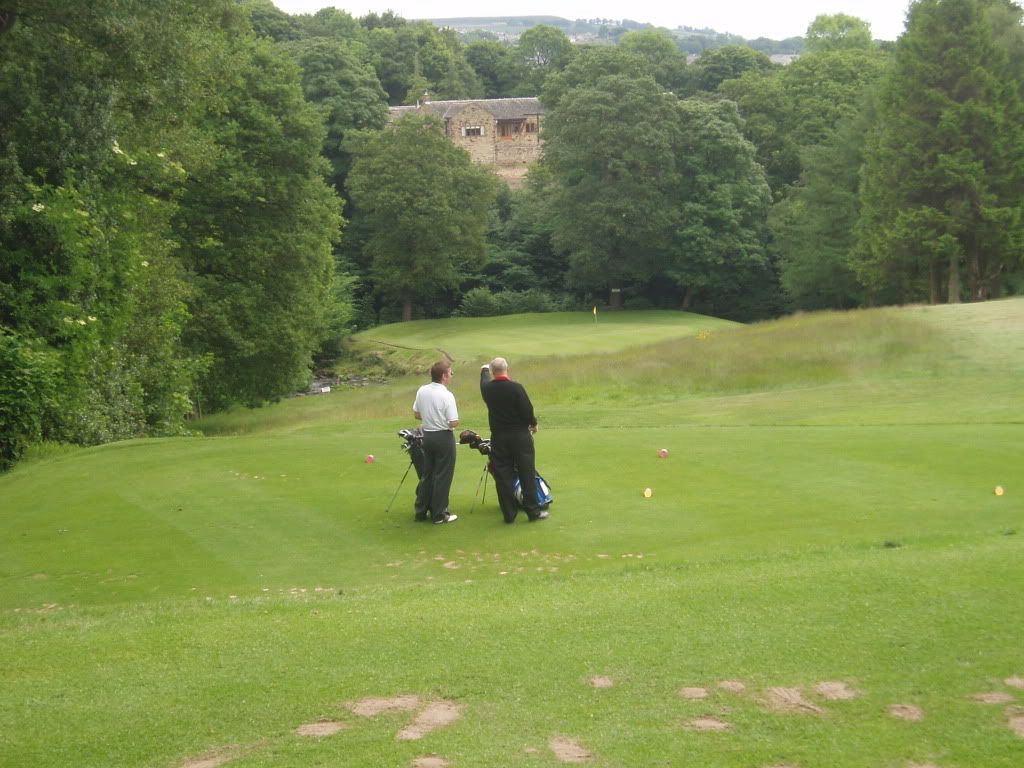
From this yellow tee it is probably only 160 yards, but it is still an excellent hole. The river is out-of-bounds and the OOB continues round the back of the green.
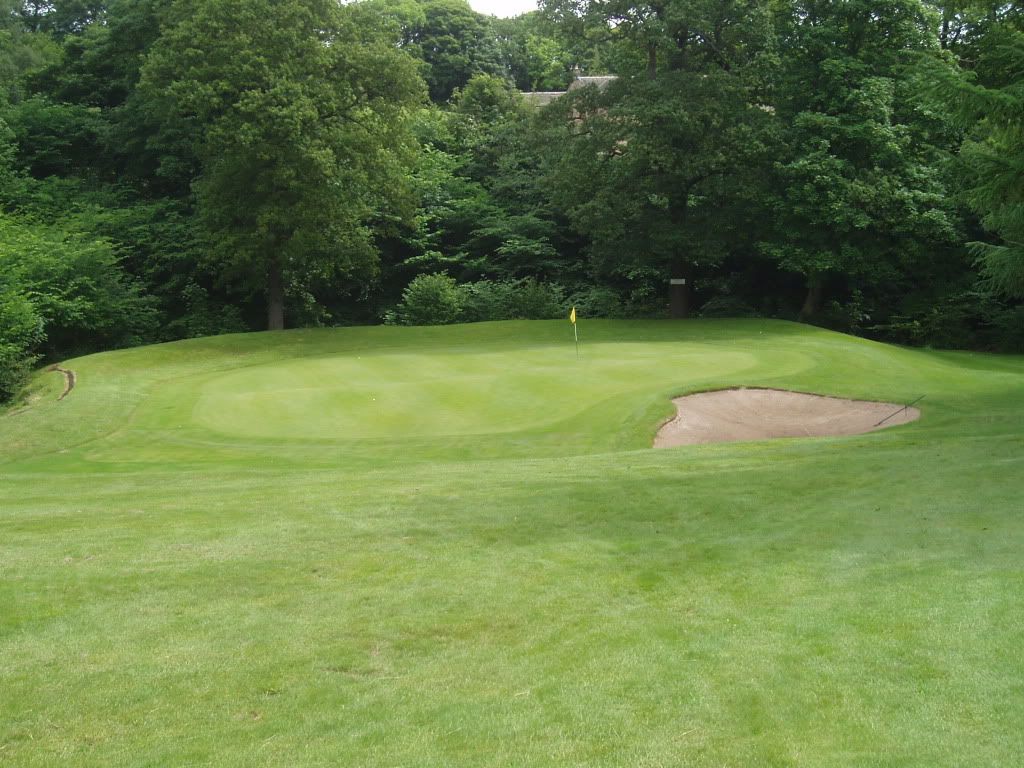
It is not sufficient just to make the green. You have to make the right part of this reverse-MacKenzie green. Even then you have all sorts of mischievous slopes to deal with.
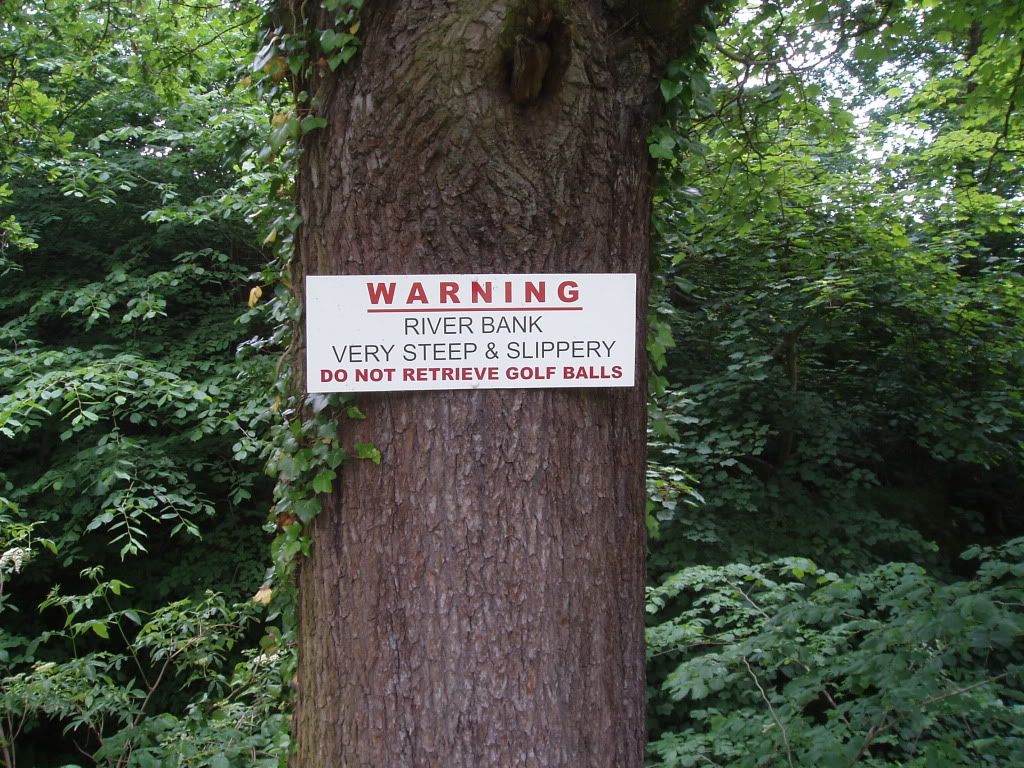
Health-and-Safety has its say.
8. 176 yards par 3
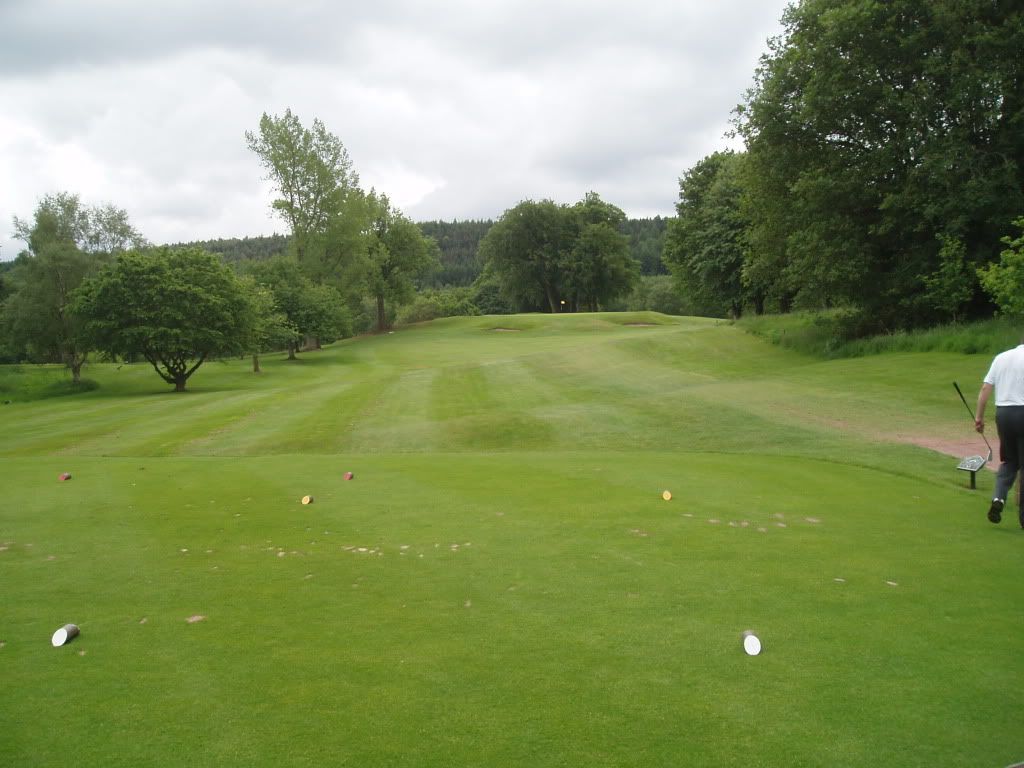
The second of back-to-back par 3s, and what you see is what you get: a target green, only 25 yards deep, at the top of a slight rise that leaves you indecisive about clubbing.
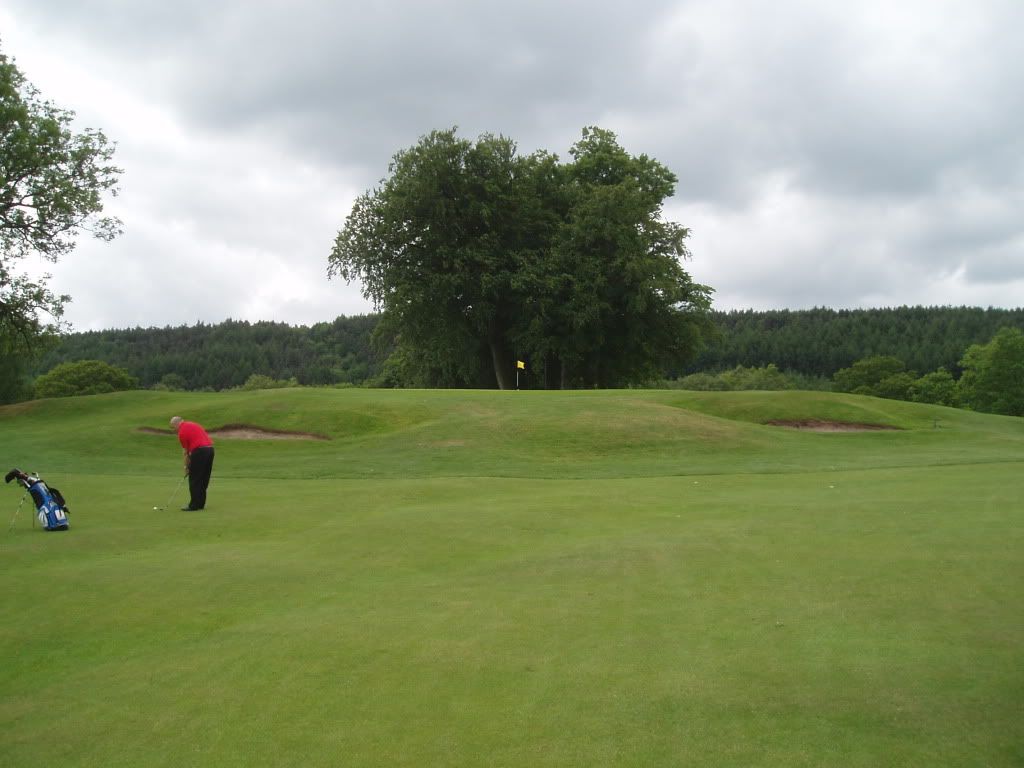
9. 492 yards par 5
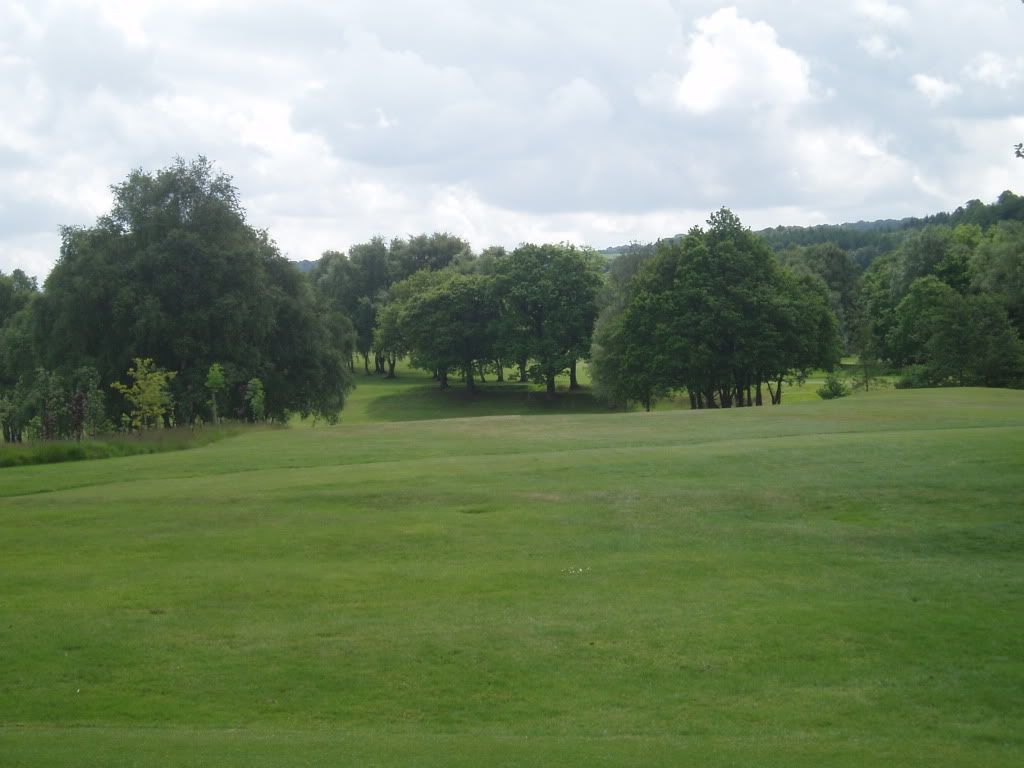
From the tee it is slightly difficult to make out the best line. In the distance is a ridge running across the fairway. It should not be a factor for good players, but it significantly interferes with the drives of reasonable players.
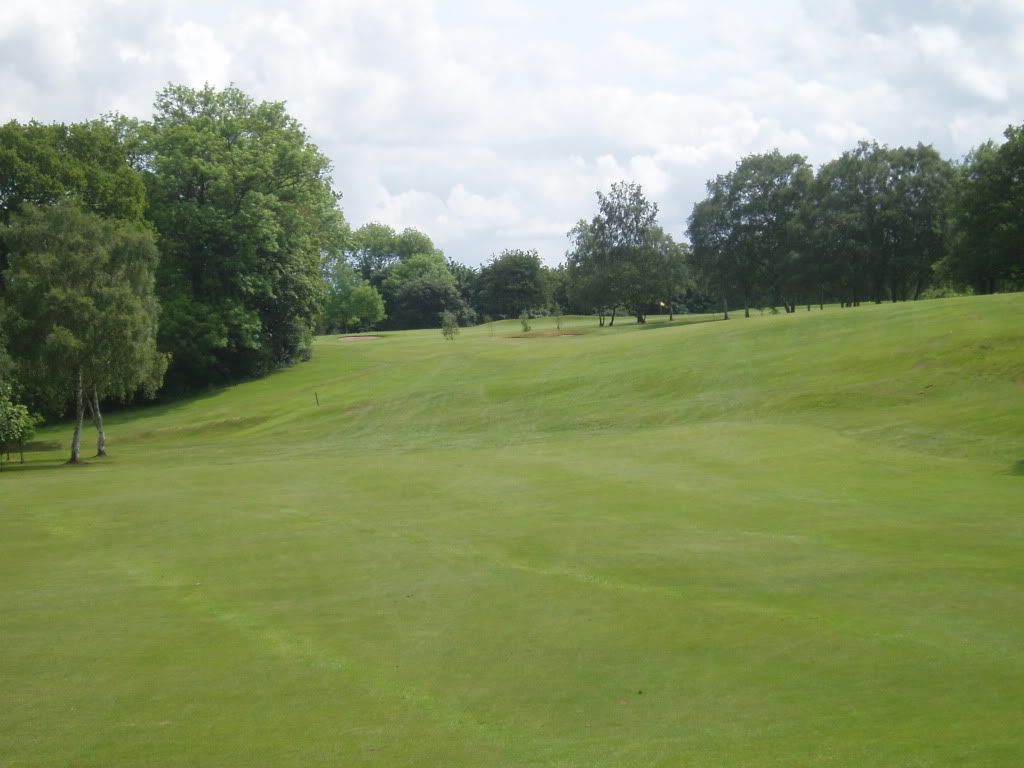
Actually the whole fairway slopes to the left. But where is the green?
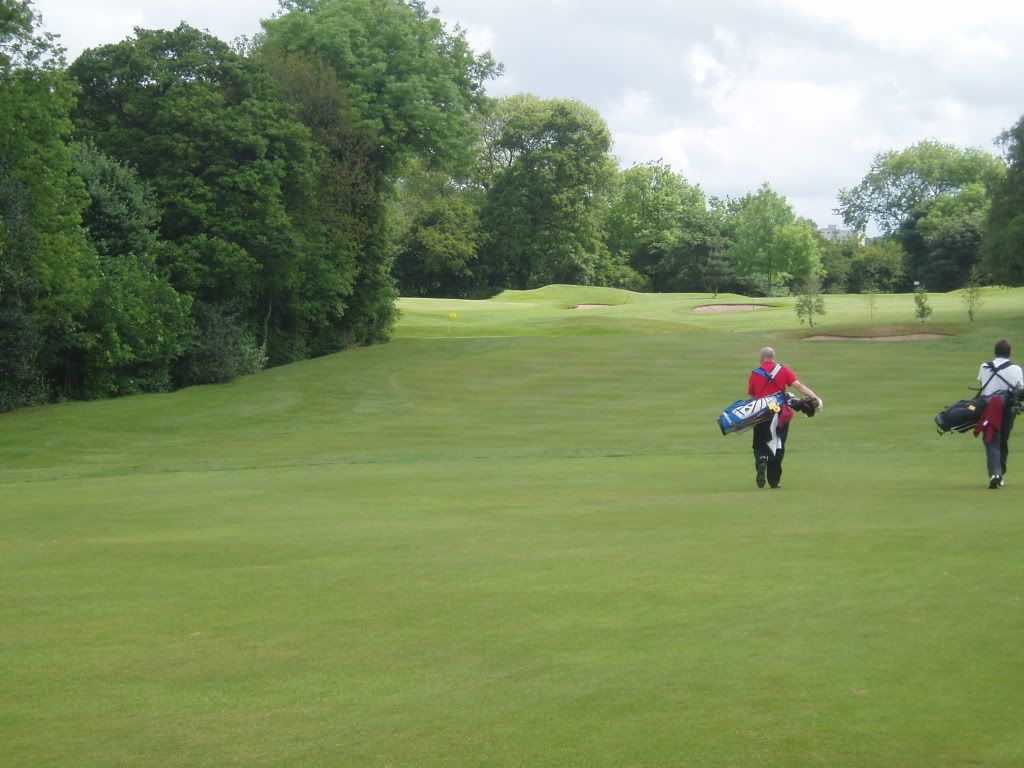
It is only quite a long way down the fairway that the green’s sunken position, tucked in to the left, is revealed.

The nearer you get to the green you appreciate the greater the risk of missing to the left. It is hidden from view of those aspiring to get on in two. Yet it is only stroke 17. The risk/reward factor is considerable.
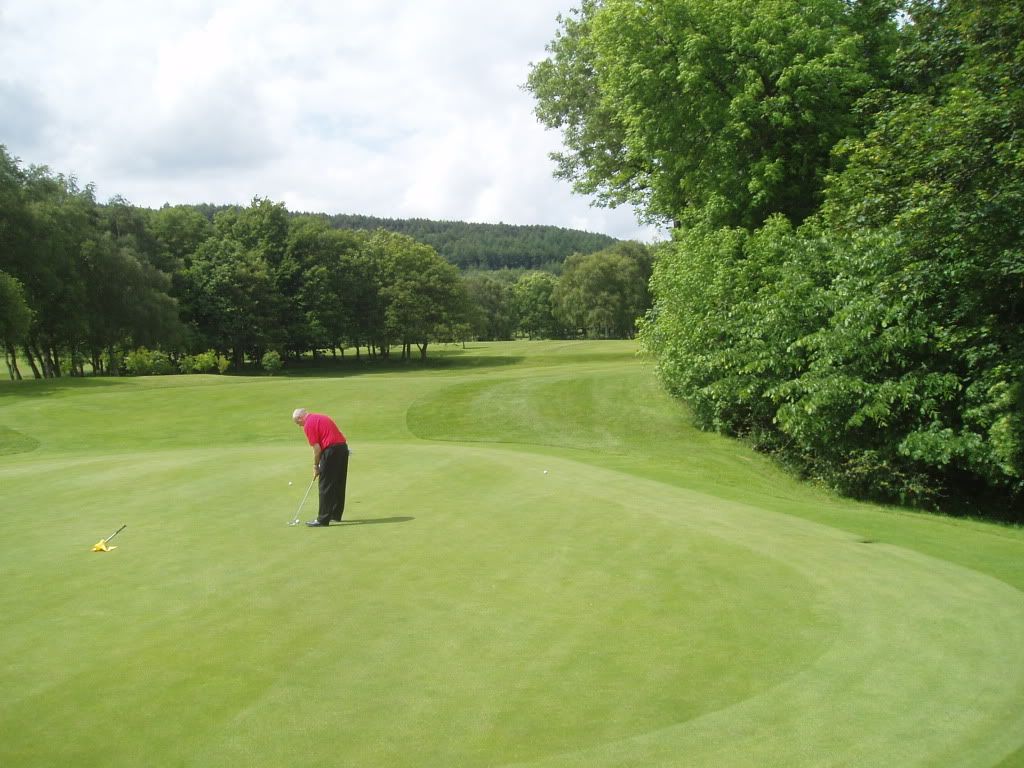
Perhaps the tightness of the green is even more apparent in this view, looking back. Once again, it is not an expansive green, being only 26 yards deep.
10. 439 yards par 4.
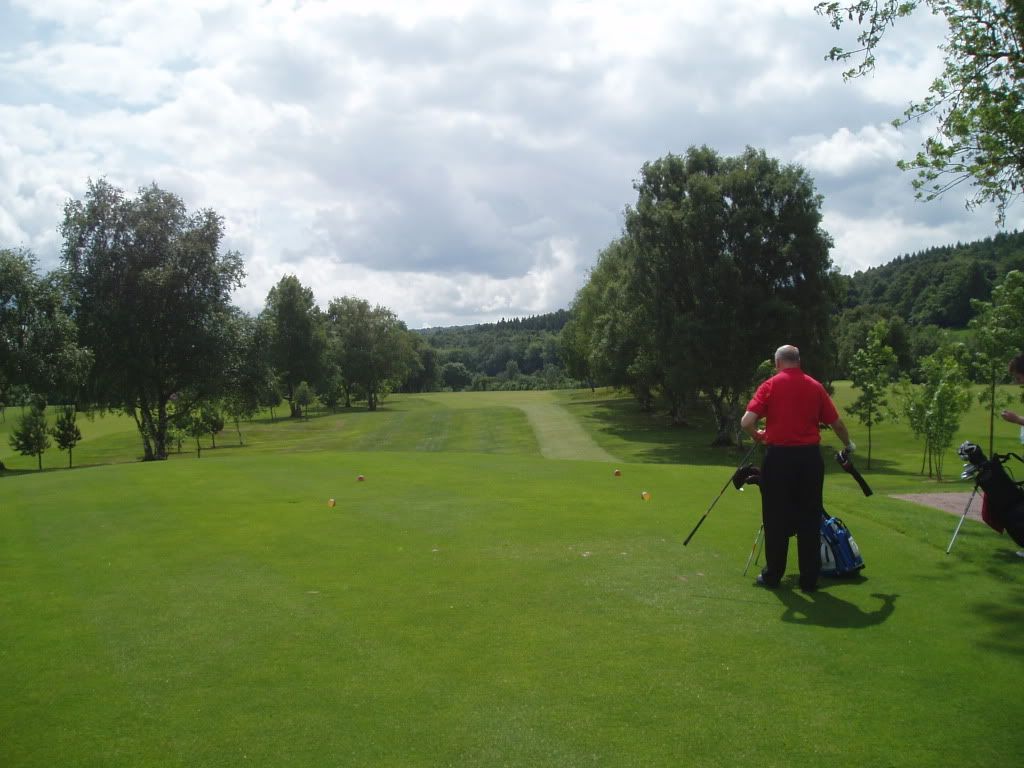
An inviting drive, ideally to the right side of the fairway, which bends gently left.
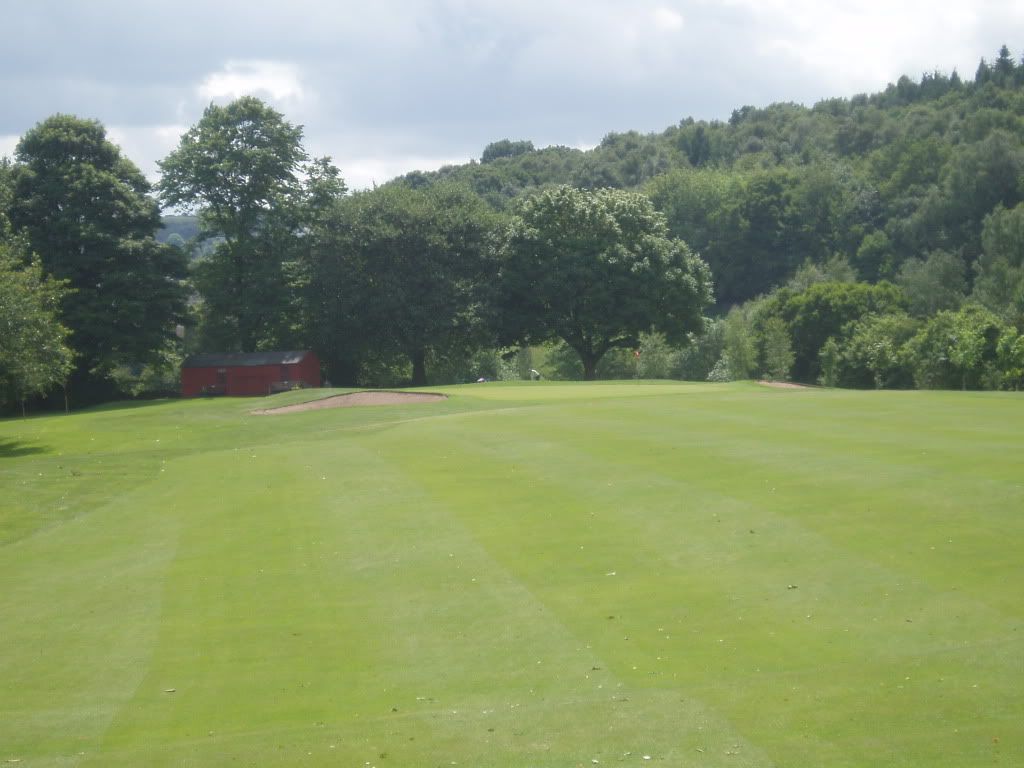
The green is well sited, with drop offs to either side and through the back.
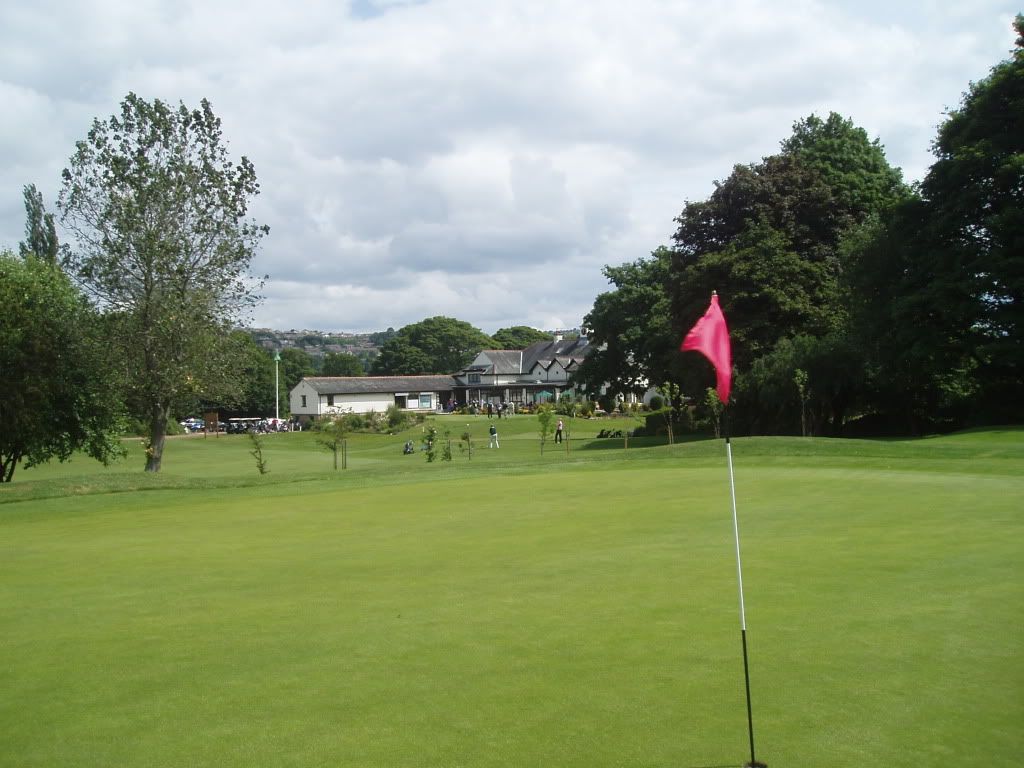
The view from the 10th green past the first tee (with two ladies teeing off) and onwards to the clubhouse which was designed, apparently, by F Atkinson, a local architect.
11. 168 yards par 3
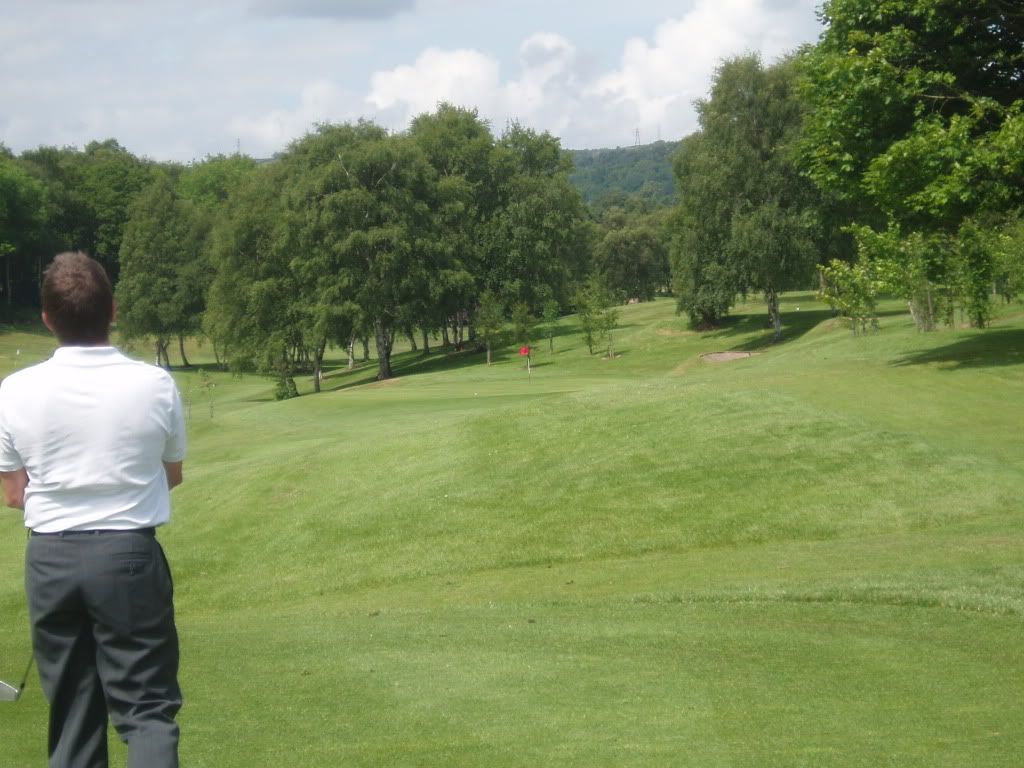
This is the alternative starting hole, which the professional reckons is the easiest of the short holes. As you can see, there is a big right to left slope on the approach and a couple of all-consuming bunkers on the right.
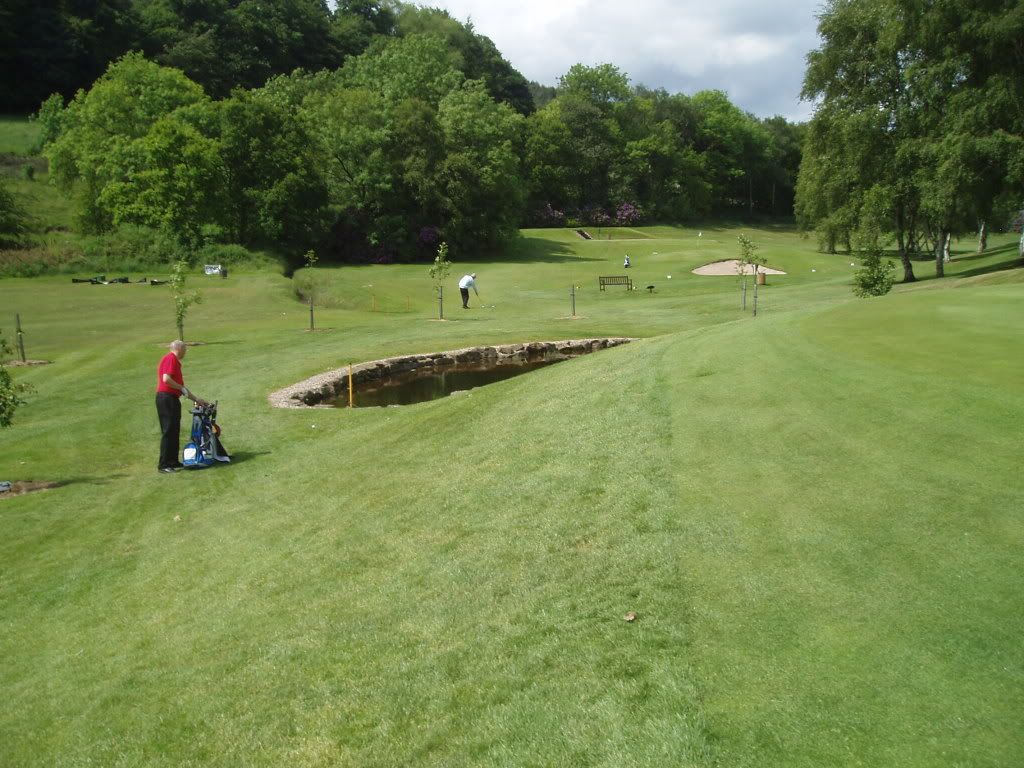
Catch the left side of the green and the ball leaps down towards a little pond. On the left is one of the practice areas – a fairly perilous place to be I should have thought. Beyond that is the men’s medal tee from which the next hole is played as a left-hand dog-leg.
12. 397 yards par 4

From the visitors’ tee the hole is played straight down the valley, but it is slightly longer at 411 yards from this tee. Making my drive I was very aware of someone practising on the green to the left – exactly in my shanking range!
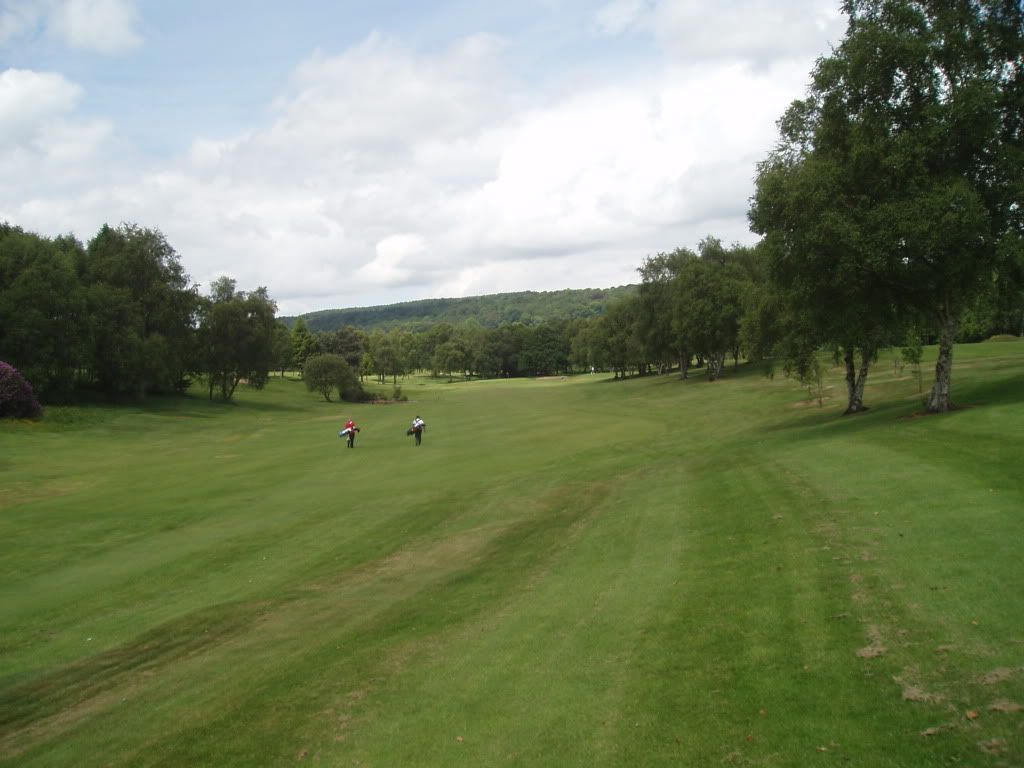
The right to left slope on the fairway ensures that a pond on the left, 250 yards out from the visitors’ tee, is very much in range of many drives.
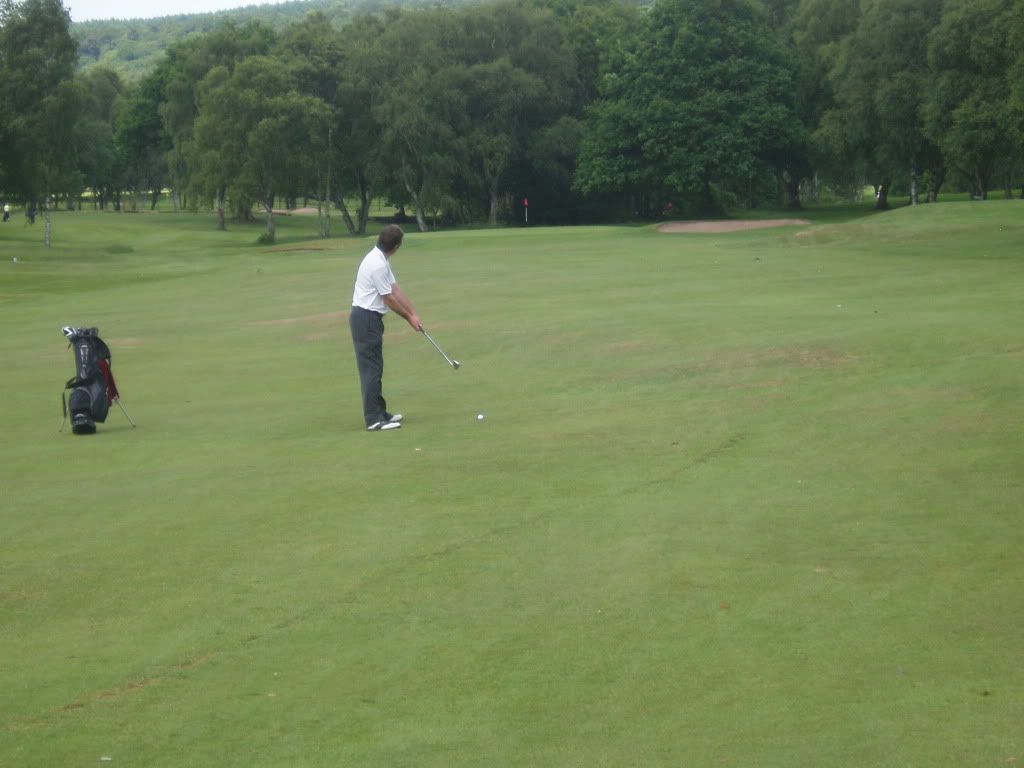
There is just enough movement in the fairway and slight elevation to the green to deflect any approach not struck perfectly.
13. 143 yards par 3
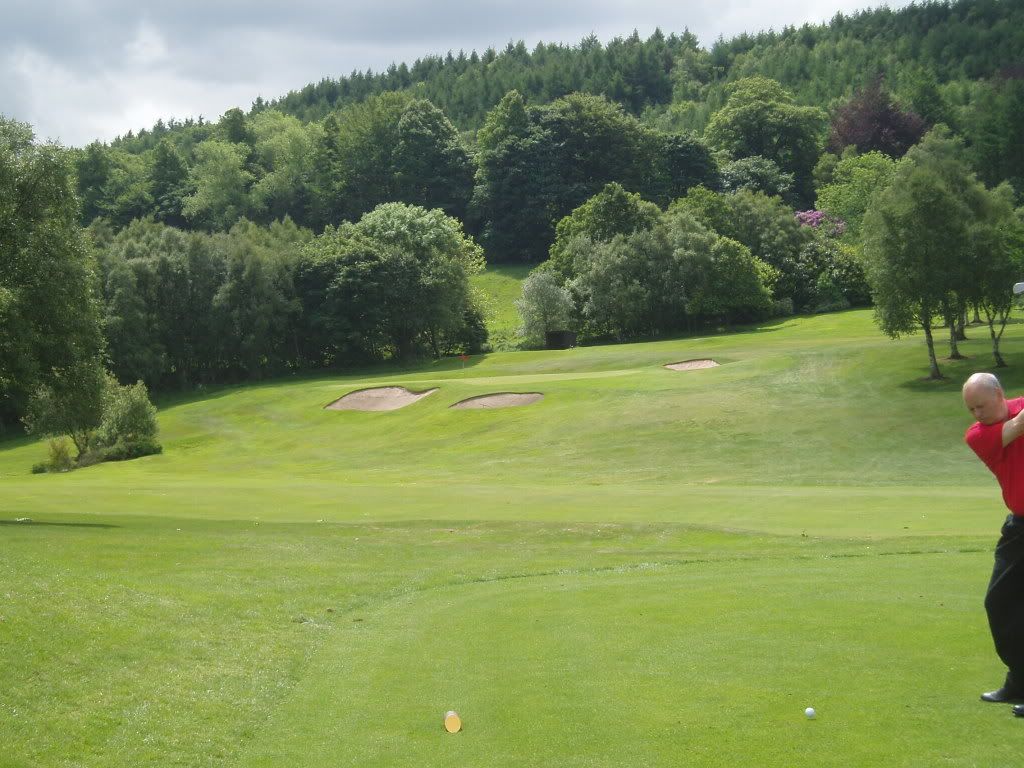
A diminutive short hole played diagonally across the 12th fairway.
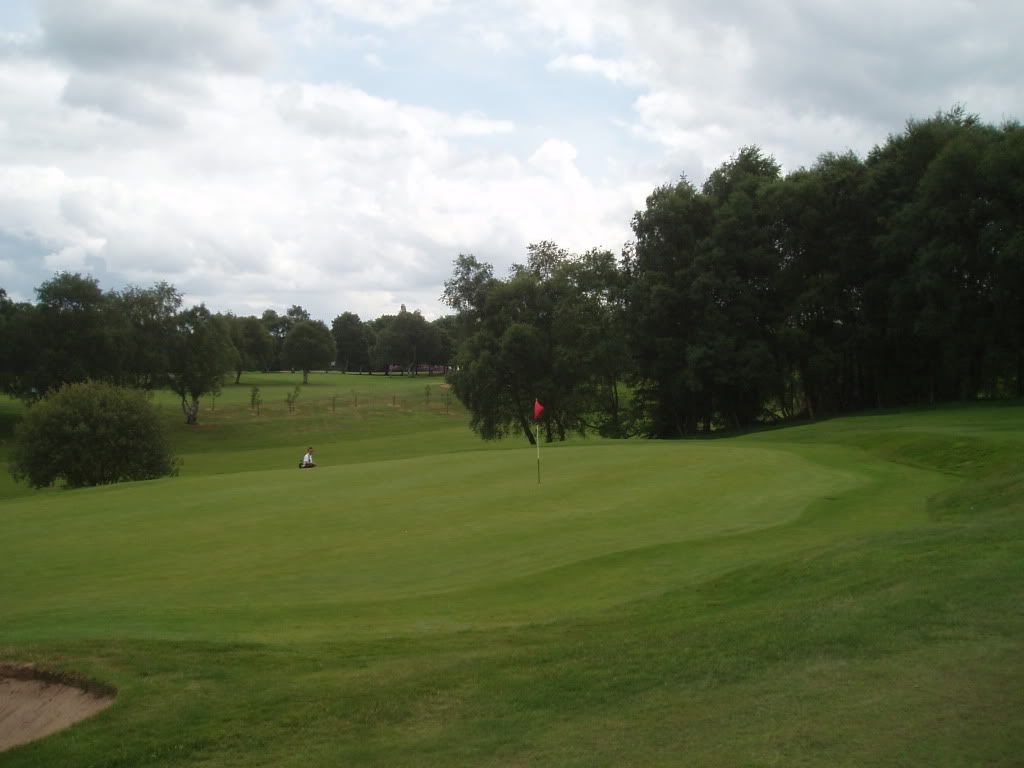
This is not a green to miss as the slightly domed putting surface is a devil to pitch to.
14. 384 yards par 4
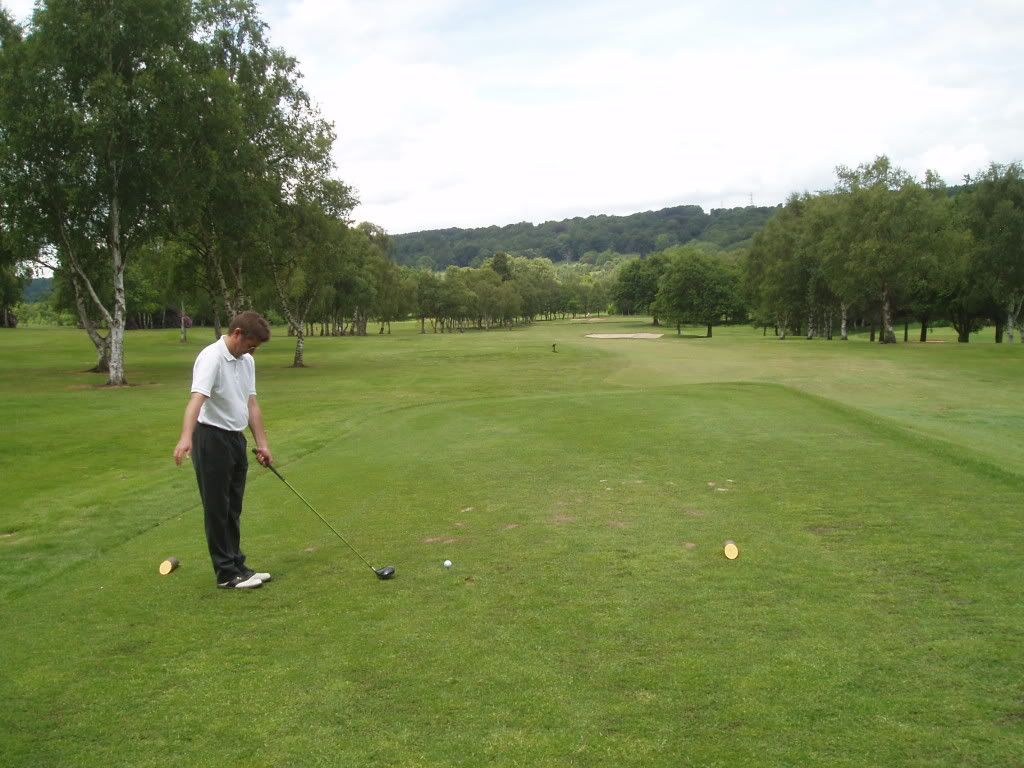
Quite a difficult drive as the fairway slopes and it is all too easy to get blocked out by the big oak 75 yards beyond the (rare here) fairway bunker.
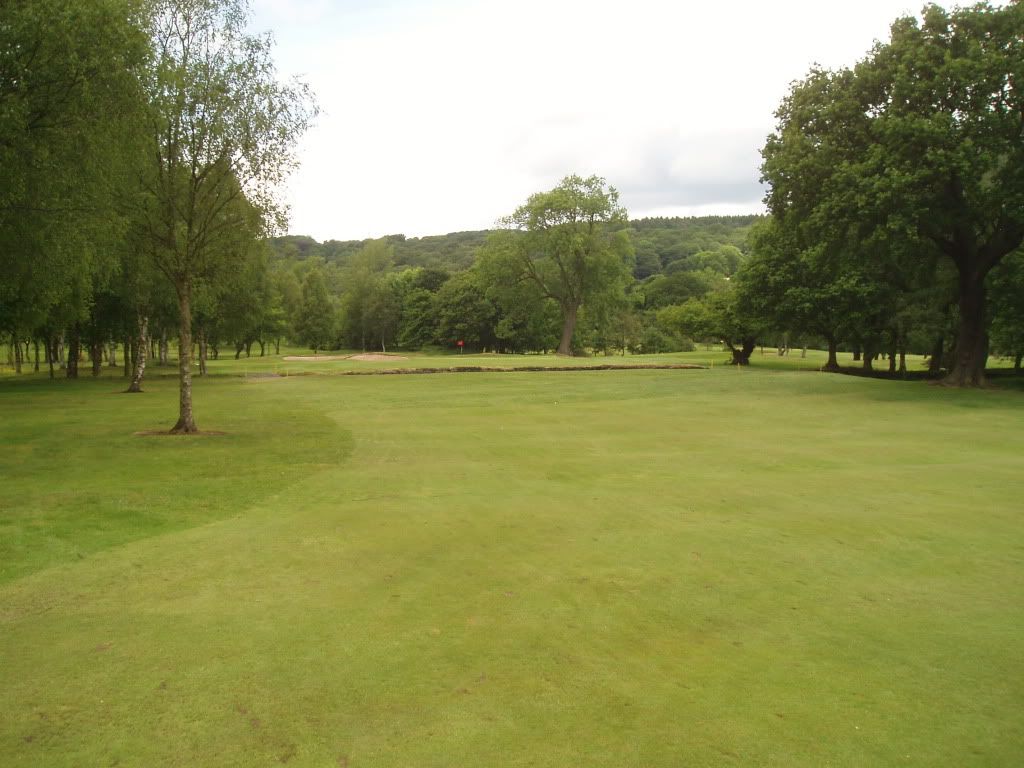
That is the second big oak on the right, which might get you if the first one does not. However, the approach from what might seem to be the safer side, the left, is complicated by the extreme left-to-right slope on the approach to the green and, again, on the putting surface.
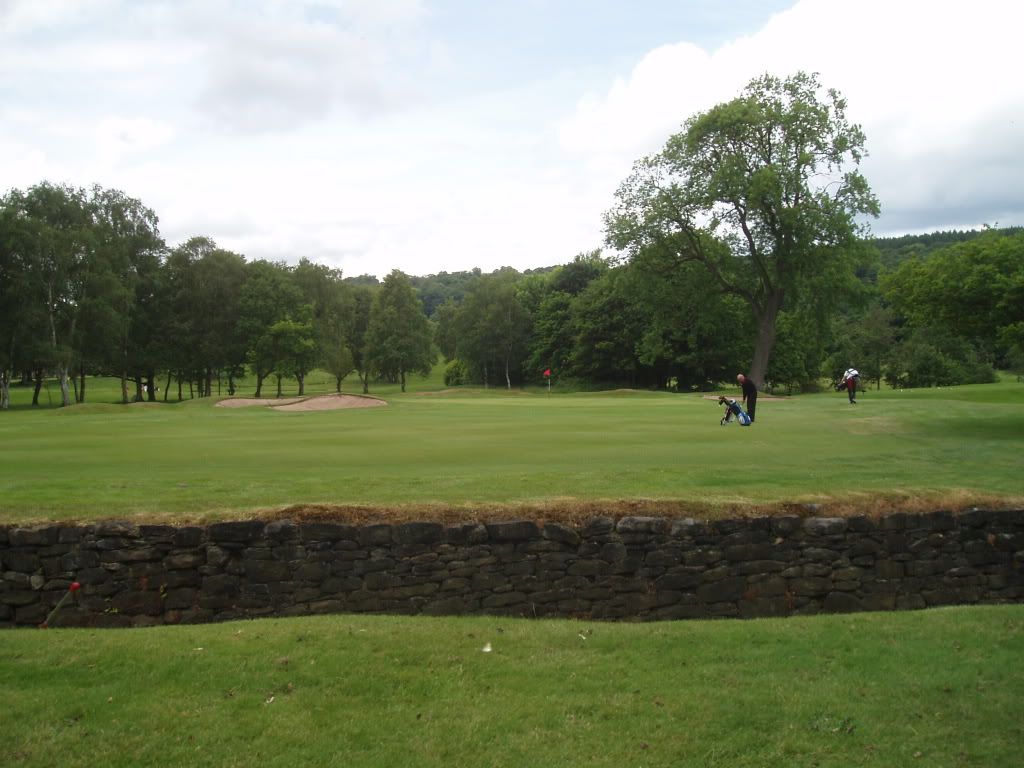
The ditch should not be a factor, unless you are a short hitter, but the difficulties of the approach shot make this Stroke 2.
15. 521 yards par 5
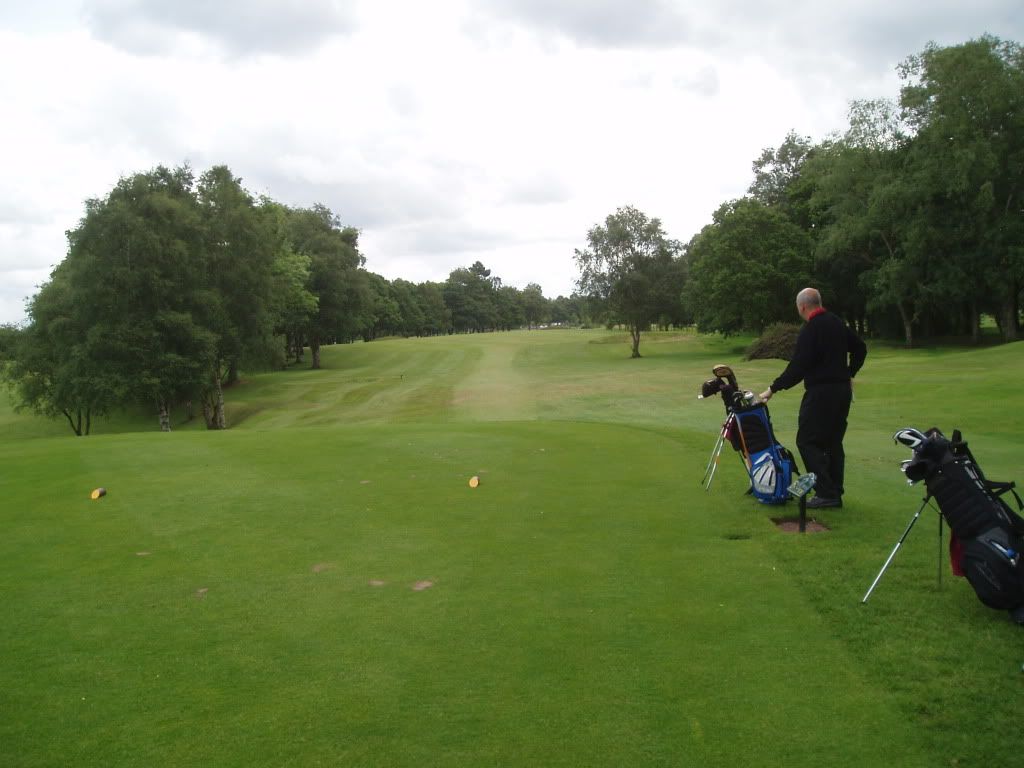
The final par 5 is also the longest. New saplings have been planted on the right of the fairway, presumably in an effort to prevent those on the 13th tee being hit by a wild shot from this tee.

Played as a three shot hole, the approach is simple enough, but those intent on making the green in two must not err to the right.
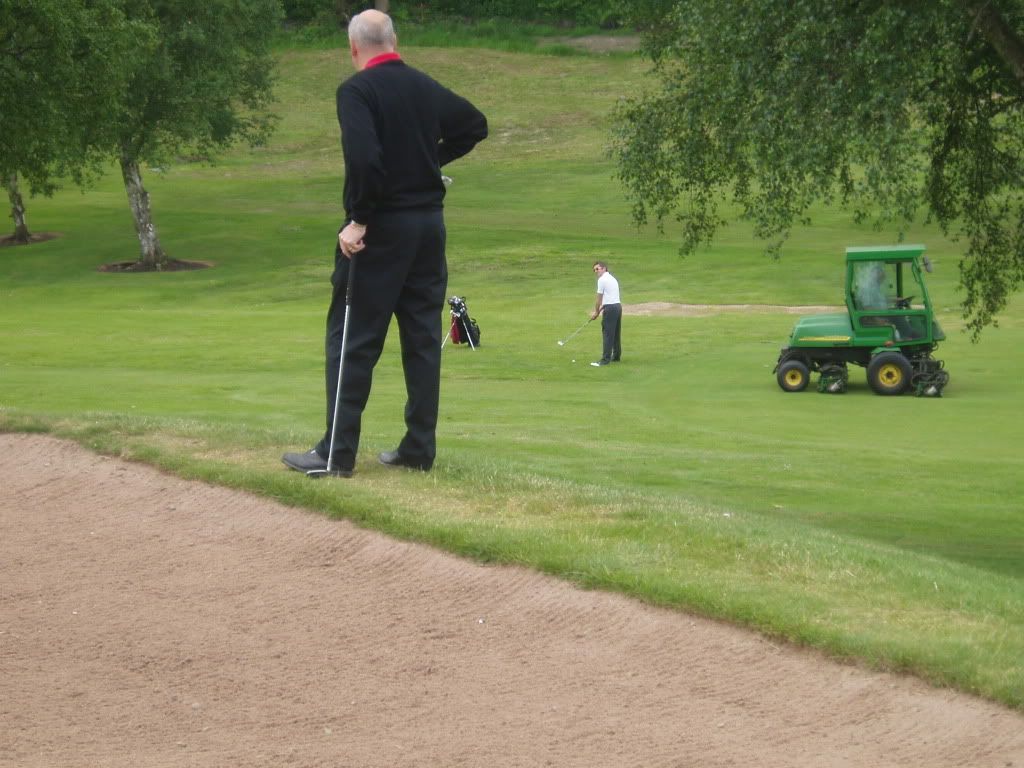
Having hit the slope to the right of the green, Andy faces a testing pitch from the 12th fairway.

Despite the close attentions of a man with a mower, Andy chipped this close and got his second birdie of the morning.
16. 336 yards par 4
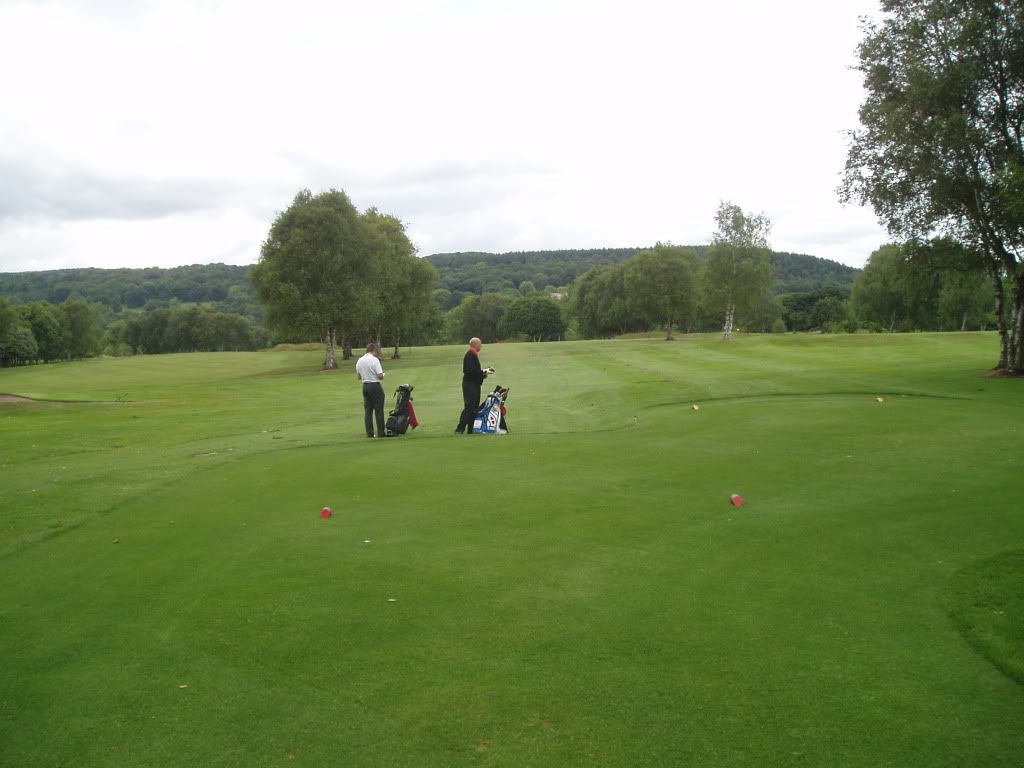
A lovely little par 4, which Andrew and Andy were potentially capable of driving from the visitors’ tee at about 270 yards. The top of the flag is just visible to the right of Andrew’s head.
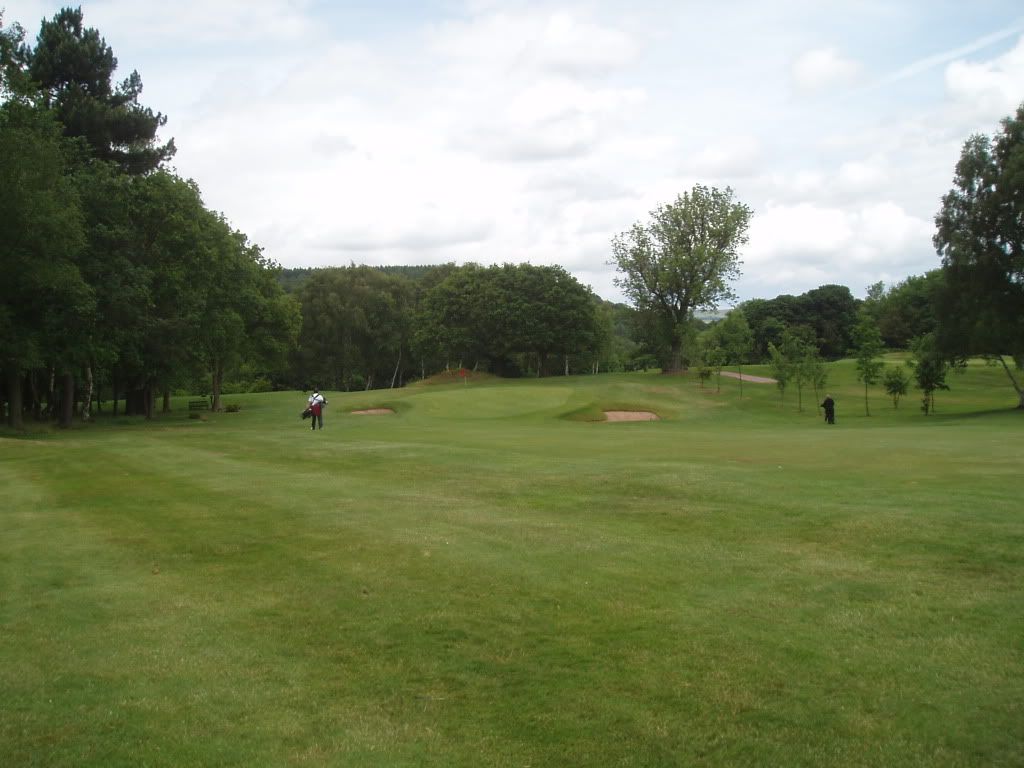
Both were up level with the green, but already the penalties for being out of position are apparent.

Andrew plays a nearly perfect chip from the right, but the slopes on the green will make putting from the right edge a trial.

Even from this range there will be a significant break on the putt. Looking back, it is easy to see how the fairway runs the ball off to either side of the green. A super little hole.
17. 161 yards par 3
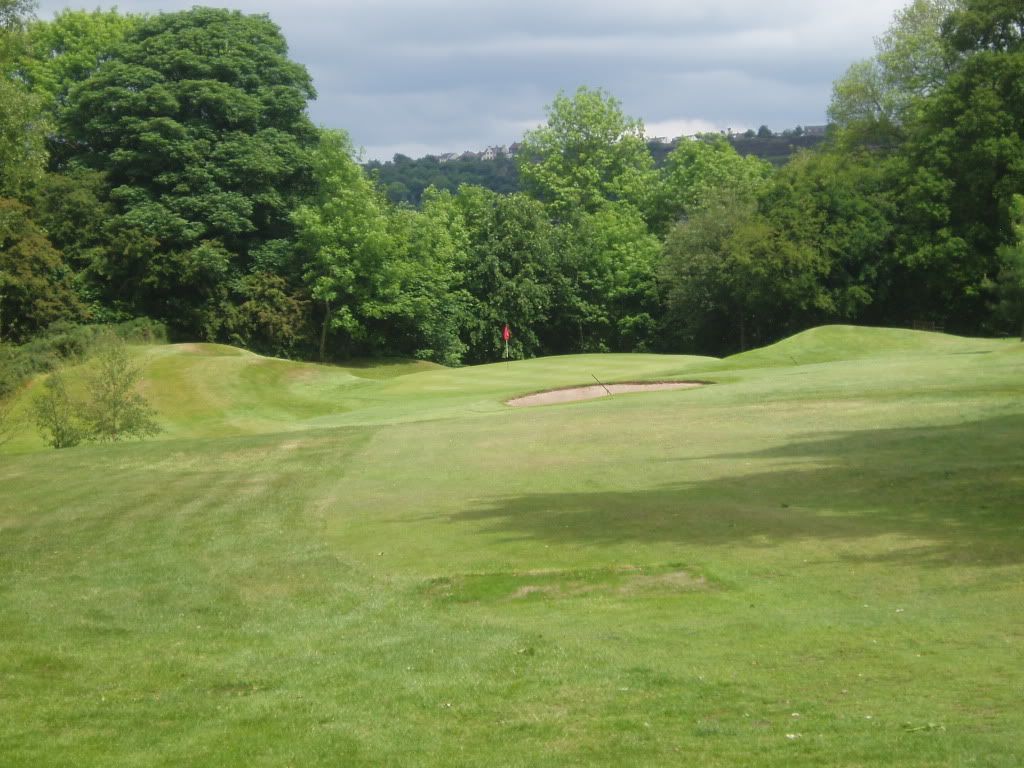
A very attractive and quite tricky short hole. The visible bunker cleverly foreshortens the hole and many tee shots are left short in an apron of dead ground between the bunker and the putting surface.
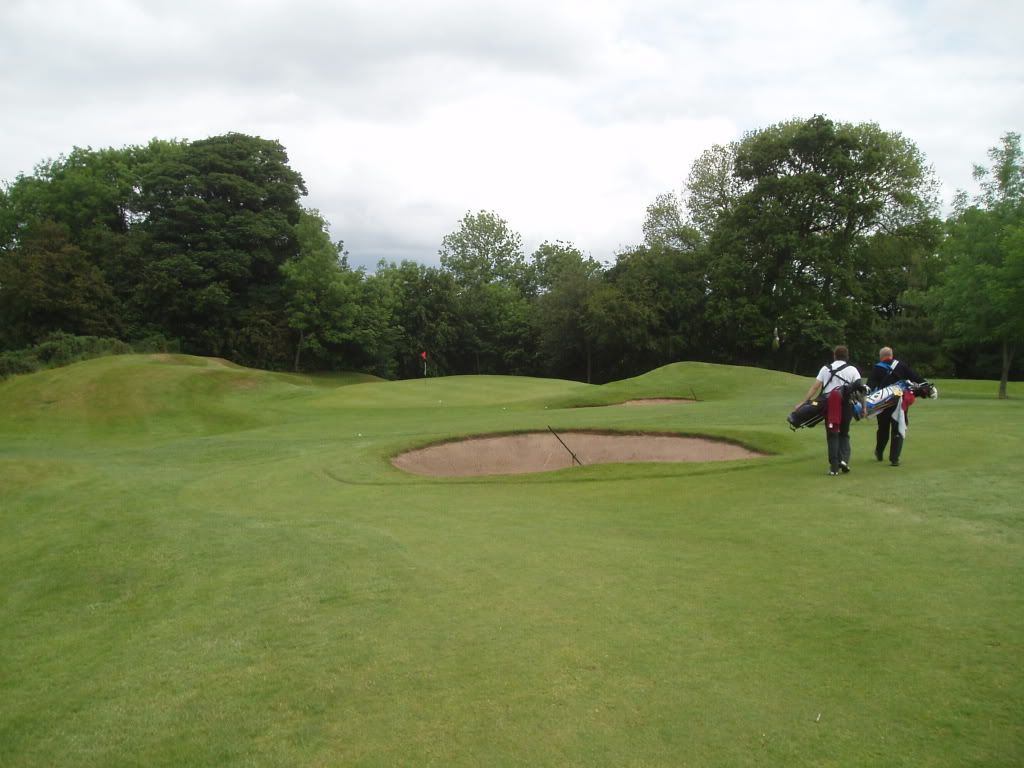
What did I say?
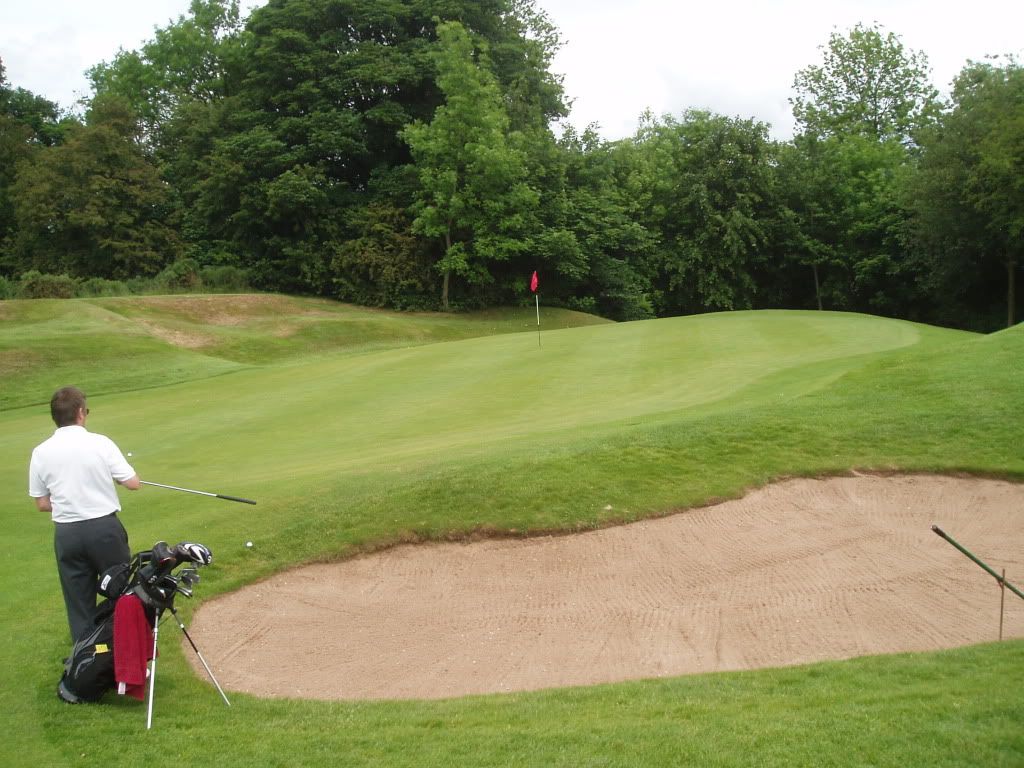
No putt is conceded on this sloping putting surface and this could be a nasty green to miss long.
18. 349 yards par 4
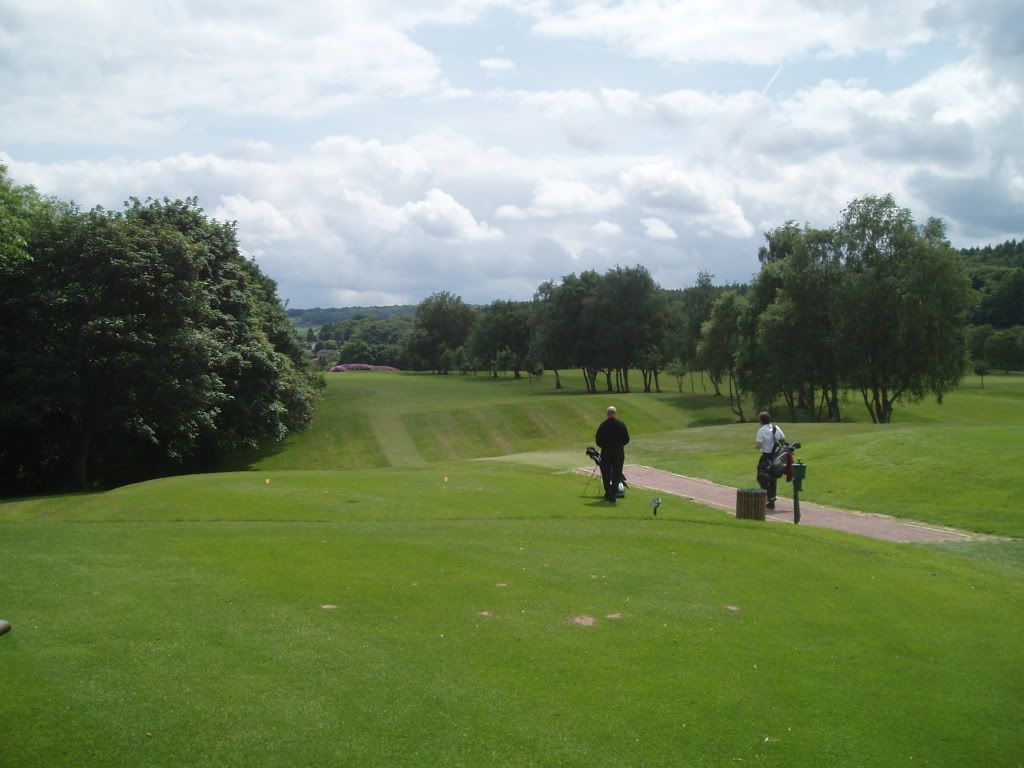
A pleasant drive to end, but it is imperative not to finish in the trees on the right in trying to avoid the dense woods and out of bounds on the left. The rhododendrons we cleared on the first tee are the right line.
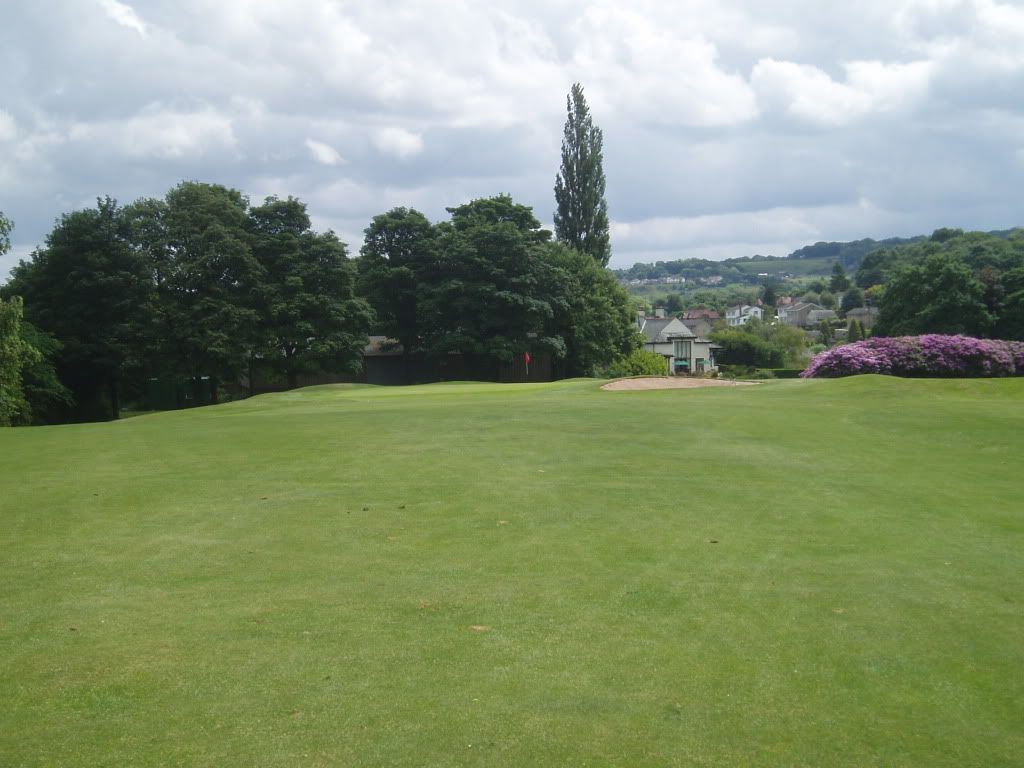
After a good drive this is all you are left with, but be aware that it is out of bounds only a little beyond the back of the green.
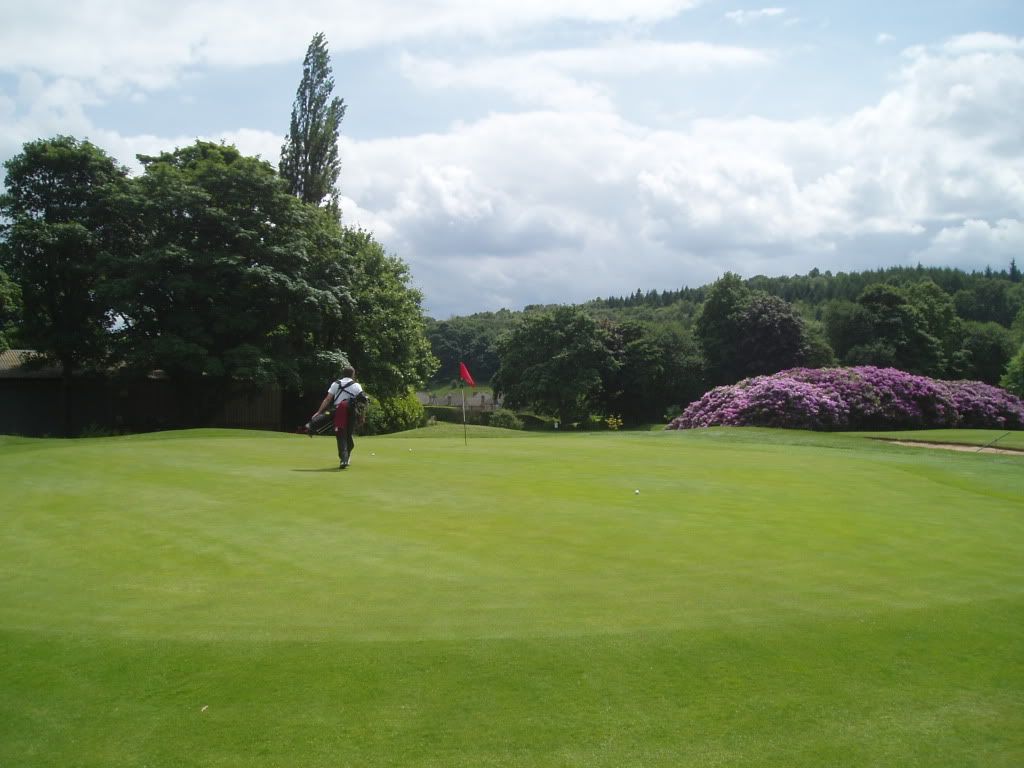
Young Levett stalks after his ball. Shortly after, he popped it straight into the hole for his third birdie of the day. What a pity he did not apply for Bethpage this week!